economy
Migraine: symptoms, prevention and treatment
Published
3 days agoon
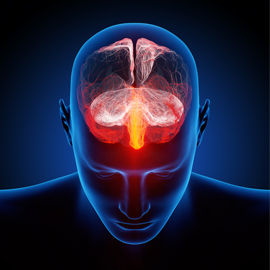

Noun: persons forming or belonging to a particular group, such as a nation, class, ethnic group, country, family, etc.
Noun: A group of persons regarded as being servants, followers, companions or subjects of a ruler or leader.
Noun: One’s colleagues or employees.
Noun: A person’s ancestors, relatives or family.
Noun: The mass of a community as distinguished from a special class (elite); the commonalty; the populace; the vulgar; the common crowd; the citizens.
Noun: People in general, humans, by extension sentient beings real or fictional.
Verb: To stock with people or inhabitants; to fill as with people; to populate.
Verb: To become populous or populated.
Verb: To inhabit; to occupy; to populate.
Verb: To interact with people; to socialize.
Migraine: symptoms, prevention and treatment
Migraine is a severe headache that is often accompanied by nausea, vomiting and sensitivity to light. Migraines can last from 4 hours to three days and sometimes even longer. Migraines are more common in women than men. Migraine symptoms usually begin between the ages of 10 and 40.
Doctors don’t know the exact cause of migraine headaches, although they appear to be related to changes in the brain as well as genes. For years, scientists believed that migraines are caused by changes in blood flow to the brain. Many now believe that this condition is the result of brain defects that are inherited from parents to children. Migraines begin when over-activated nerve cells send signals to stimulate the trigeminal nerve; The nerve that is responsible for creating sensation in the head and face. The activation of this nerve causes the release of certain chemicals such as serotonin and calcitonin gene-related peptide (CGRP). CGRP causes blood vessels in the lining of the brain to swell, and as a result, neurotransmitters are released in the brain, which ultimately cause inflammation and pain. The results of some studies show that 85% of people with migraine headaches have a history of head or neck injury. In most cases, these injuries were caused by accidents or childhood injuries.
Migraine symptoms based on its stage can be accompanied by symptoms that change over time and usually have several stages:
1. preliminary stage
2. Her stage
3. attack phase
4. After-effect stage
Preliminary stage: Early warning signs appear. Hours before the onset of a migraine, and sometimes even days before, many people may experience the following symptoms:
- Being unusually energetic, excited, or depressed
- Irritability
- thirst
- Strong tendency to certain foods
- Drowsiness and lots of yawning
- Frequent need to urinate

Aura stage: This stage is the beginning stage of strange feelings. 1 out of every 3 or 4 people with migraine will experience an aura before the headache starts. Aura can include the following:
Vision changes:
– Seeing flashes of light or jagged arcs of light: This condition usually occurs on the left or right side of vision and may become larger within a few minutes.
– Blind spot in the field of vision: This problem, combined with flashing lights, can make it difficult to drive or focus on small objects.
– Seeing images related to the past or hallucinations.
Skin sensations:
During an aura, a person may have a tingling sensation. Numbness may also occur. These sensations often involve the face and hands, but may even spread throughout the body.
Language problems:
- Difficulty expressing thoughts when speaking or writing
- Difficulty understanding words
- confusion
- Difficulty concentrating
Attack stage: the onset of headache
Migraine pain :
- It usually starts in the area above the eyes
- It usually affects one side of the head but may involve the entire head or move from one side of the head to the other. This condition can also affect the lower part of the face and neck
- Throbbing pain that worsens during physical activity or bending forward
Symptoms may worsen during movement. Other symptoms may also occur at this stage:
- Abnormal sensitivity to light, sound, and smell
- Feeling lightheaded and fainting
- Nausea and vomiting
Post-effect phase: after the headache
After a severe migraine, a person may not feel well for a day. Symptoms of this stage can include the following:
- severe fatigue
- the slowness
- confusion
- Headache that worsens when bending forward or moving quickly
Migraines may change over time in terms of frequency or severity. The same steps may not be seen in all attacks. Also, a person may only have an aura without having a headache. Since many of the symptoms in these stages of migraine can occur in more dangerous situations such as a stroke or seizure, you should see a doctor if you notice any new symptoms or things that have not been checked by a doctor.

Types of migraine headaches
Not all migraines are the same. One person’s migraine can be very different from another’s.
Migraine headache with aura
In this type of migraine, a person knows that a headache is starting because they feel strange before it: they feel dizzy, they feel a ringing in their ears, they see zigzag lines, and the light bothers them. Although migraines can be extremely painful and incapacitating, they are not fatal. Things can be done to reduce them, and there are drugs and devices for treatment and prevention.
Symptoms: About a third of people experience warning symptoms hours or days before a migraine starts, such as:
- Special food trends
- Euphoria or moodiness
- Fatigue and yawning
- A feeling of stiffness, especially in the neck
- The need to urinate frequently
- Constipation or diarrhea

Aura often starts about an hour before the headache and includes the following:
- Blind spots in the center of vision (scotoma)
- Loss of vision in one or both eyes
- Seeing zigzag-like patterns
- Seeing sparks of light
- seeing, hearing, or smelling things that are not there (hallucinations)
- Fainting, mumbling, or numbness (drowsiness)
- Difficulty finding words or speaking (aphasia)
Aura usually lasts less than an hour. Some symptoms may continue until the headache stage.
Pain stage: Migraine pain is continuous or pulsating and may be felt in the forehead or one side of the head around the eyes. Adults are more likely to have this problem on one side of the head. Headache may last from 1 hour to 3 days. In addition to pain, other symptoms of the headache stage include:
- Stomach upset or vomiting
- Feeling hot and cold
- runny nose
- Dizziness or lightheadedness
- Neck or jaw discomfort
- Sensitivity to light, sound, smell, touch or movement
- confusion
diagnosis
The doctor performs a physical examination and examines the muscles, reflexes, speech, and senses to test the nerves in the head. He will also ask about the patient’s health history.
- Do other family members have migraines with other types of headaches?
- All kinds of drugs, especially contraceptives or blood pressure control drugs
- Do headaches get worse after hard work, coughing, or sneezing?
Blood tests and imaging such as X-rays, CT scans, or MRIs can help rule out other causes, such as infection or bleeding.
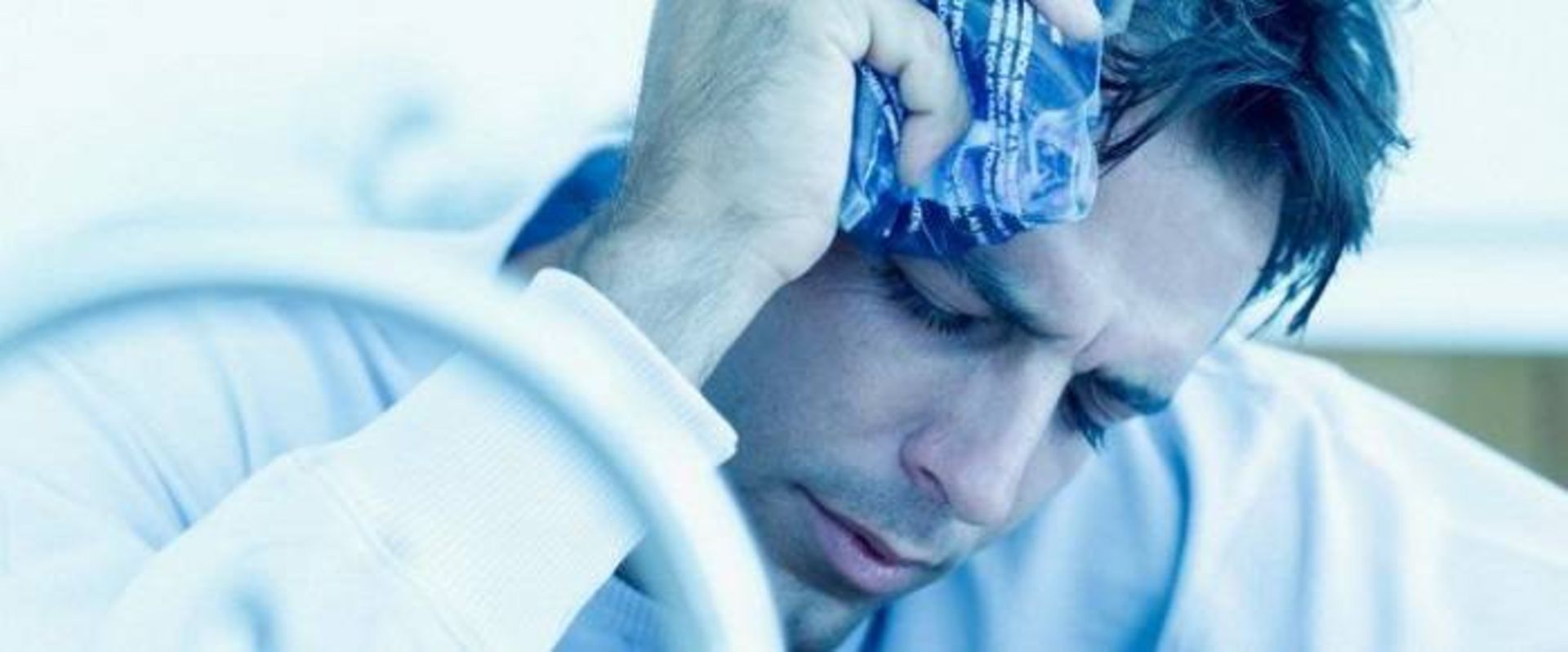
Treatment
When a person has a migraine with Aura, he should stay in a quiet and dark place. A cold compress or pressure on painful areas can be helpful. Over-the-counter pain relievers such as aspirin, acetaminophen, or nonsteroidal anti-inflammatory drugs (NSAIDs) such as ibuprofen or naproxen may help. Prescription drugs called triptans include drugs such as almotriptan, eltriptan, frovatriptan, rizatriptan, and sumatriptan. Ergots may also be effective in treating migraine pain. Other medications can relieve associated symptoms such as nausea and vomiting.
Several devices have also been designed to help treat migraines. One device, called SpringTMS or eNeura Stms, uses a technique called transcranial magnetic stimulation (TMS). This device is placed on the back of the head for one minute and sends a wave of magnetic energy to the brain. The clay device, which is designed in the form of a headband, is turned on daily for 20 minutes to prevent the development of migraines and sends electrical waves to the brain through the forehead skin. Gamacor is also a device that non-invasively stimulates the vagus nerve in the neck. To use any of these devices, a doctor’s prescription is required.
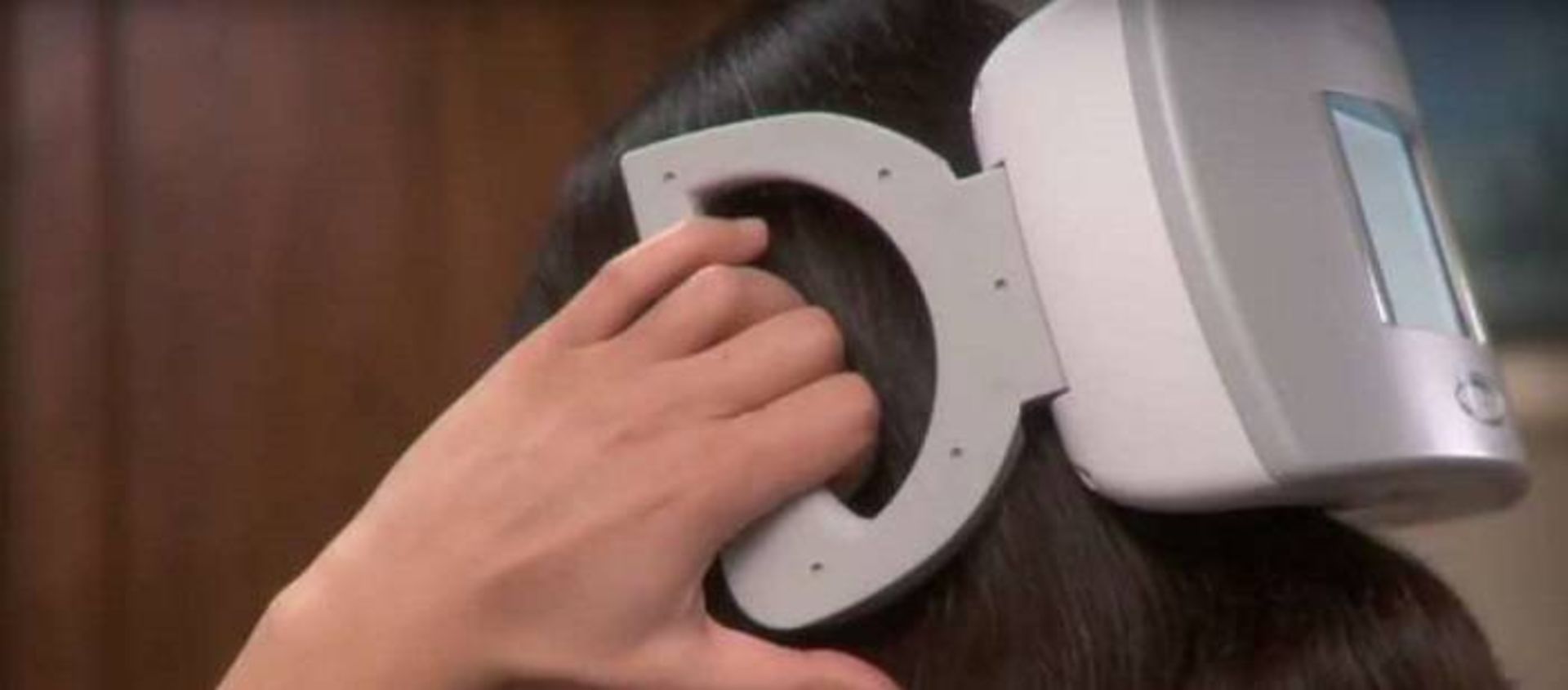
A device used for transcranial magnetic stimulation of the brain that can help treat migraines
Prevention
If the person does not respond to other treatments and has migraines for 4 or more days in a month, the doctor prescribes preventive medications. A person should take medicines regularly to reduce the intensity or frequency of headaches. These medications include anticonvulsants, blood pressure medications (such as beta-blockers and calcium channel blockers), and some antidepressants. CGRP inhibitors are also a new class of preventive drugs that may be prescribed when other drugs are ineffective. Avoid common triggers such as:
- some foods
- Medicines
- stress
- Tiredness, illness, or starvation
- Changes in hormone levels
- flashing light
- Change in air pressure and altitude
-
What is stress and how to overcome it?
A daily headache diary can help you and your doctor understand what triggers your headaches. The date and time of the onset of migraine, any food eaten, work being done, and any medication taken before the onset of the headache should be recorded. It takes several weeks of note-taking to discover the pattern of migraines.
Migraine headache without aura
A migraine without aura is more than just a headache. Only its pain can prevent you from doing daily tasks, and there can also be symptoms such as nausea and vomiting. Migraine without aura is the most common type of migraine headache, which includes about 75% of all migraines. This type of migraine does not have initial symptoms (aura).
Migraines are more common in some families, so researchers believe that this condition has a genetic basis. Factors that trigger migraine attacks in some people include certain foods, smells, stress, and things in the environment. Migraine often begins in childhood and worsens during adolescence. Boys get migraines more than girls, but the prevalence of this condition is higher in adult women than in men.
Symptoms
Often, people feel pain in the forehead or one or both sides of their temples. The pain may be continuous or throbbing. The headache will last 4 to 72 hours. A person may also have some of the following symptoms:
- nausea
- vomiting
- yawning
- Irritability
- low blood pressure
- euphoria
- Sensitivity to light, sound, smell, or movement
- Dark circles around the eyes

Diagnosis
At first, you should make sure that the cause of these headaches is not something else. For this purpose, the doctor will perform certain physical and neurological examinations and will ask questions such as the following:
- Do other family members suffer from migraines or other types of headaches?
- Does the patient have allergies?
- What is the level of stress in his life?
- Does he use drugs such as birth control pills and vasodilators? (These drugs can cause headaches)
- Does the headache start after coughing or sneezing or after vigorous exercise?
The doctor may order the following tests:
- Blood tests
- Imaging tests such as X-rays, CT scans, or MRIs
- Tests aimed at diagnosing infection, bleeding, or other medical problems that can cause similar symptoms

treatment
Migraine treatment without aura has two goals: symptom relief and prevention of future attacks
To help relieve migraine symptoms:
1. Stay in a quiet, dark room
2. Applying cold compresses or applying pressure to painful areas
3. Taking pain relievers such as aspirin, acetaminophen, ibuprofen, ketorolac, or naproxen, or taking medications such as almotriptan, altriptan, frovatriptan, naratriptan, rizatriptan, and sumatriptan that help constrict blood vessels. Ergots may also be effective in treating migraine pain.
4. Using medications to treat other migraine symptoms such as nausea and vomiting

The clay device is placed on the forehead for 20 minutes daily in order to prevent migraine attacks.
Migraine prevention
1. If other treatments do not work and the person has migraines for 4 or more days in a month, the doctor may suggest preventive medications. The patient must take these medicines regularly. This group of drugs includes anticonvulsants, blood pressure control drugs, and some antidepressants. CGRP inhibitors may be prescribed if other drugs are ineffective.
2. The use of devices such as Clay, SpringTM, and Gamacore may also be recommended.
3. A headache diary helps identify headache patterns and triggers.
4. Avoid food starters. The patient can use the information in the notes and the trial and error method to find out which of the following foods can trigger migraines:
- chocolate
- cheese
- Red wine and other alcohols
- Citrus fruits
- Avocado
- banana
- raisins
- plums
- Artificial sweeteners
- Food preservatives such as nitrates, nitrites, and monosodium glutamate (MSG)
- Ice cream or other cold foods
5. Avoid migraine-inducing drugs. Many over-the-counter and prescription medications can cause migraines:
- cimetidine
- Estrogen
- Hydralazine
- Nifedipine
- Nitroglycerin
- Ranitidine
- Reserpine
Never stop taking a medication without consulting your doctor
Relieve psychological or emotional triggers: stress, depression, anxiety, and intense emotions such as sadness can trigger migraines. Although these cannot always be avoided, they can be managed. Relaxation exercises, biofeedback, and self-hypnosis techniques can help relieve these sources of stress and prevent migraines, especially in children. Illnesses, skipping meals, and being very tired can trigger migraines. Excessive exercise, movement, and head injuries can also cause this condition. Even menstruation can trigger a migraine. Some people are also sensitive to flashing lights, fluorescent lights, changes in pressure, and altitude.
Migraine with aura compared to migraine without aura
In both cases, the patient experiences typical migraine symptoms that may last from a few hours to a few days. These can include:
- Sensitivity to light, smell, sound, and touch
- blurred vision
- Pain that usually starts on one side of the head and gets worse with movement
- Stomach upset and vomiting
- Stiffness in the shoulders and neck
When a person has an aura, the condition usually comes on slowly over 5 to 20 minutes and may last up to an hour. These symptoms often act as a warning sign and appear before the onset of pain, but they can also occur during the migraine itself.
Visual aura is one of the most common types of aura. A person may see strange shapes or phenomena that enlarge or move, such as:
- blind spots
- Colored dots
- Flashes of light
- Twinkles and stars
- tunnel vision
- Zigzag lines
They can affect other senses and even the ability to move. The patient may experience the following:
- Confusion and difficulty understanding others
- Uncontrollable movements, such as sudden jerks
- muscle weakness
- Hearing music or sounds that are not actually there
- The tingling sensation that started from the fingers, went to the arm and spread to the whole face
- speech problems
Of course, the mentioned symptoms may also be symptoms of a stroke. If a person has any of these symptoms and the doctor has not already said that these are part of their migraine, they should seek medical help.
Are different tests needed to diagnose these two types of migraine?
With any type of migraine, your doctor will perform tests to check for other problems that could be causing these symptoms. Depending on the type of symptoms the patient has, blood tests or imaging such as a CT scan or MRI may be needed. In migraine with aura, in some cases, the symptoms are similar to a more serious problem such as a stroke or seizure. Tests should be done to eliminate the possibility of these cases. Once it is ensured that there is no other problem, there is no need to see a doctor every time the patient experiences the same aura, but if the symptoms change, they should be investigated.
It should be known that migraine with aura slightly increases the risk of stroke. Awareness of this issue is especially important for women who use birth control pills, undergo hormone replacement therapy, or people who smoke because these things, along with migraines, can even increase the risk of stroke.

Ocular migraine
If a person has an ocular migraine, they may lose their vision for a short period of time. A person may experience this condition along with or after a migraine headache. This is a rare problem. Some studies have shown that in many cases, these symptoms are caused by other problems. Regular migraine attacks may cause vision problems, including seeing bright lights and blind spots. But these symptoms usually occur in both eyes. Ocular migraines are not the same as retinal migraines, and the latter, which occurs in one eye, is a more dangerous condition that requires more medical attention. Warning signs in this case include:
- Vision problems or a change in vision that may last for a few minutes to 30 minutes. It cannot be said with certainty that symptoms occur in one or both eyes. This situation can be noticed by alternately covering the eyes.
- A headache that lasts for 4 to 72 hours and affects one side of the head
- The intensity of the pain is moderate to severe
- Throbbing pain
- Feeling worse when moving
- nausea
- vomiting
- Sensitivity to light and sound
Causes
Experts are not sure what causes ocular migraines. Some believe that these problems are related to:
1. Retinal blood vessel spasm
2. Changes that spread to all the nerve cells in the retina
This is rare, but people who have this type of migraine may be at risk of permanent vision loss. Experts don’t know whether medications that prevent migraines, such as tricyclic antidepressants or anticonvulsants, can help prevent this vision loss, but if a person has an ocular migraine, even if it goes away on its own, it’s best to be aware of your symptoms. Consult a doctor.
How to diagnose ocular migraine
The doctor will ask about the symptoms and examine the patient’s eyes. He tries to rule out the possibility of other problems that could cause similar symptoms:
- Transient blindness (Amaurosis fugax): temporary blindness caused by lack of blood flow in the eye. This condition can happen due to blockage of the artery leading to the eye.
- Spasms of the arteries that carry blood to the retina.
- Giant cell arthritis: a problem that causes inflammation of blood vessels and can cause vision problems and blindness.
- Other vascular problems related to autoimmune diseases
- Substance abuse
- Problems that prevent normal blood clotting, such as sickle cell disease and polycythemia vera.
Ocular migraine treatment
Ocular migraine symptoms usually go away on their own within 30 minutes, so most people don’t need treatment for it. The best thing to do is for the patient to stop working and rest the eyes until the vision returns to normal. Loss of vision in one eye can be caused by problems that are not related to migraine and should be diagnosed by a doctor. Little research has been done on the best way to treat or prevent ocular migraines. Your doctor may prescribe one or more of the following medications:
- Medicines that treat epilepsy, such as sodium (Depakote, Depakine) or Topamax
- Tricyclic antidepressants such as amitriptyline or nortriptyline
- Blood pressure control drugs (beta blockers)
Silent migraine
A silent migraine means that it may have any of the usual symptoms of a migraine except for one, pain. A doctor may prescribe medications or devices that can treat the problem. Avoiding migraine triggers is also helpful.
Symptoms
A person may have symptoms that are likely to occur at any stage of a migraine, but they do not suffer from the classic pain of the temples. During the preliminary stage, the following symptoms can be present:
- Being cranky or energetic
- Food preferences
- More fatigue and yawning
- A feeling of stiffness, especially in the neck area
- Urinary frequency
- Constipation or diarrhea
After that, the aura phase begins, which usually lasts about an hour. This type of migraine is known for its unusual visual symptoms:
- Seeing uneven or wavy lines
- Seeing flashlights
- The presence of a point in the field of vision
- See blind spots
- tunnel vision
Other senses, movement, and speech may also be involved and the person may experience the following:
- Hearing problems or hearing sounds that are not there
- Sensation of strange smells or tastes
- Numbness, numbness, or tingling
- weakness
- Difficulty remembering or saying words
Even if a person does not have a headache, a silent migraine can affect his body in other ways, such as the following:
- Stomach upset or vomiting
- Feeling hot and cold
- stuffy or runny nose
- Dizziness and lightheadedness
- Jaw or neck pain
- Sensitivity to light, sound, smell, touch or movement
- confusion
After that, the patient may feel very tired and feel bored for a day.
Not all migraine attacks follow the same pattern. Even for one person, these symptoms can be unpredictable.
Silent migraine starters
Silent migraines can be triggered by the same factors that cause chronic migraines. Common primers are:
- caffeine
- alcohol
- chocolate
- nuts
- pickles
- Foods or drinks containing the amino acid tyramine, such as aged cheeses
Environmental factors can also cause it:
- Light on or flashing
- loud sounds
- Extreme cold or heat
- Changes in hormone levels (during menstruation, pregnancy, or menopause or when taking birth control pills)
Public welfare is also important:
- stress; Physical or emotional
- lack of sleep
- Skipping meals
Diagnosis
Keeping a journal is an important step. The patient should try to monitor what he eats and changes in sleep or stress levels and other possible triggers. Also, the signs and time of their beginning and end are important. Medical history and notes will help the doctor know what is going on. In rare cases, symptoms can be a sign of a different, more serious medical problem, such as a stroke or brain hemorrhage. To rule out the possibility of these cases, tests such as CT scan or MRI should be performed.
Treatment and prevention
More than 100 drugs can treat migraine, but the patient must choose the best drug for him with the help of a doctor. By identifying his triggers, the patient should try to avoid them. Having a healthy lifestyle and managing stress also helps to improve this condition.
Hemiplegic migraine headaches
Hemiplegic migraine is a rare and serious type of migraine headache. Many of its symptoms are similar to the symptoms of a stroke, for example, muscle weakness can be so severe that it causes temporary paralysis of one side of the body, and that is why it is called hemiplegic.

Symptoms
Sometimes before the real headache, the symptoms appear:
- Severe, throbbing pain, often on one side of the head
- A tingling sensation that often moves from the hand to the arm
- Numbness on one side of the body, which can include the arm, leg, and half of the face
- Weakness or paralysis on one side of the body
- Loss of balance and coordination
- Dizziness and feeling of spinning head
- Nausea and vomiting
There may also be problems with attention, communication, and sleepiness:
- Seeing zigzag lines, diplopia, or blind spots
- Extreme sensitivity to light, sound, and smell
- Language problems such as mixing up words or difficulty remembering words
- unintelligible speech
- confusion
- Loss of consciousness and (rarely) coma
The aura usually comes on gradually over half an hour and can then last for hours before slowly resolving. Stroke-like symptoms can range from annoying to debilitating. Unlike strokes, they come on slowly, shrink, and then may resolve completely. Muscle problems usually go away within 24 hours but may last for several days. This type of migraine does not have predictable patterns. Headache usually follows paralysis, but it can occur before it, or there may be no headache at all. A person may experience severe pain while having little weakness, and then in the next attack, they may experience severe paralysis without experiencing pain. Although uncommon, some people may develop long-term problems with movement and coordination over time. Hemiplegic migraine symptoms often begin in childhood or adolescence and sometimes disappear with age.

Cause of hemiplegic migraine
Researchers have identified four genes associated with hemiplegic migraine:
- CACNA1A
- ATP1A2
- SCN1A
- PRRT2
Mutations in any of these genes lead to the inability of the body to make a specific protein. Without the relevant protein, nerve cells have problems transmitting and receiving messages. One of these chemical messengers or neurotransmitters is serotonin. About half of people with hemiplegic migraine inherit the mutated genes associated with the disease from their parents.
Diagnosis
To check this problem, the doctor must do a complete examination. A CT scan or MIR can show signs of a stroke. Neck heart and blood vessel tests can rule out problems related to blood clotting. If a family member of the patient has similar symptoms, genetic testing may be done. Familial hemiplegic migraine (FHM) means that a person has received the gene for this disease from their parents and can pass it on to their children. Patients who do not have problems with these genes have diffuse hemiplegic migraine (SHM).
Treatment
Doctors disagree on how to treat hemiplegic migraine. Some doctors prescribe triptans for treatment. However, there is weak evidence that triptans, beta-blockers, and ergotamine derivatives may lead to ischemia in patients with hemiplegic migraine. CGRP inhibitors may be prescribed to prevent most migraines, but these drugs do not seem to be effective in treating hemiplegic migraines.
Vestibular migraine
Vestibular migraine is a problem of the nervous system that causes dizziness in people with a history of migraine. Unlike common migraines, this type of migraine may not always be accompanied by a headache.
Symptoms
Vestibular migraine does not always cause headaches. Its main symptom is dizziness which comes and goes. Vestibular refers to the inner ear that controls hearing and balance. A person with a vestibular migraine may experience the following:
- Dizziness that lasts more than a few minutes
- Nausea and vomiting
- Balance problems
- Extreme sensitivity to movement, feeling sick or dizzy when moving the head, eyes, or body
- Feeling confused or confused
- A sensation of rocking, as if on a moving boat
- Sensitivity to sound
Causes
Doctors do not have a definite opinion on this matter. There are many theories about its cause, but exactly how the disease occurs is not well understood. Sometimes it is attributed to incorrect connections between nerve cells in the brain.
Who has this type of migraine?
It is difficult to say how many people live with this problem. Its symptoms are similar to many other diseases. Researchers think that one percent of people in society have such a problem, but this number can be higher. Like common migraines, this type of migraine is more common in women than in men. Symptoms of vertigo usually appear around the age of 40, but the above condition does not affect only adults and children may also suffer from it.
Diagnosis of vestibular migraine
There is no blood test or imaging that can reliably diagnose this condition, but medical organizations have defined criteria for this type of migraine; A person may have a vestibular migraine if:
- Have migraines in the past or present
- Have at least 5 episodes of vertigo that cause a feeling of spinning or movement (this is not the same as motion sickness or fainting)
- These feelings can last between 5 minutes and 72 hours
- Symptoms are moderate to severe: they prevent daily activities or are so severe that the patient cannot do anything
At least half of these migraine episodes occur with one of the following migraine symptoms:
- A headache that has two of these characteristics: is on one side of the head, is throbbing, is moderate to severe, or worsens with activity
- Sensitivity to light or sound
- Seeing flashing lights
Similar diseases: The doctor will perform tests to rule out the possibility of other problems related to the brain and ears. Two conditions that cause similar symptoms are:
1. Meniere’s disease: Before dizziness, the patient usually feels fullness or pain in one of his ears. During an attack, one or both ears may ring or the patient may lose hearing. This condition does not usually occur in vestibular migraine.
2. Brain stem stroke: In this condition, a person will have a stroke along with dizziness, numbness, weakness, difficulty speaking, and other symptoms. In this situation, you should see a doctor.
treatment
There are no specific medications to treat vestibular migraine. The doctor may prescribe different drugs to stop the attack. These drugs include:
1. Triptans: The patient should take these drugs at the first sign of headache.
2. Vestibular suppressors (symptoms): These drugs reduce vertigo and sensitivity to movement by affecting the balance center in the inner ear.
Your doctor may also prescribe benzodiazepines such as lorazepam, anti-nausea medications such as promethazine, and antihistamines such as meclazine.
If a person has frequent or debilitating vestibular migraines, the doctor may prescribe medications similar to regular migraine prevention medications. These medications include anticonvulsants (such as gabapentin and topiramate), blood pressure medications, and some antidepressants. CGRP inhibitors may also be prescribed. The use of the device may also be recommended.
Knowing the triggers may also help a person avoid migraine-related dizziness.

Gamacor is a device that non-invasively stimulates the vagus nerve in the neck
Hormonal headaches and menstrual migraines
There are headaches that are associated with changes in the levels of the hormones estrogen and progesterone. Women suffering from this condition often experience menstrual migraines two days before the beginning of the menstrual period to three days after it begins. But anything that changes the levels of these hormones in the body can cause it.
Causes
1. Contraception: Birth control pills can aggravate migraines in some women and reduce them in others. These pills keep the level of hormones in the body constant for three weeks of every month. When a person takes a placebo or does not take the pill at all, during the menstrual week, estrogen levels decrease and can cause headaches. If a person is prone to hormonal migraines, using birth control pills that contain a small amount of estrogen or contain only progesterone can be helpful.
2. Hormone replacement therapy: This type of treatment that some women use to control their hormones during menopause can also cause headaches. The possibility of headache aggravation due to the use of estrogen patches (patch) is less because this type of estrogen introduces a small and continuous amount of the hormone into the body.
3. Menopause: When the menstrual cycle ends, the likelihood of migraines decreases. Of course, if a person is undergoing hormone replacement therapy, his headaches may get worse. In this case, the doctor may reduce the amount of medicine or suggest another treatment method. Often, an estrogen patch is the best option. This skin tag keeps the level of estrogen stable, so the possibility of menstrual migraines is reduced.
4. Menstruation: Some women get migraine headaches near their period. In fact, about 60% of women with migraines also experience menstrual migraines. Just before the onset of menstruation, the amount of estrogen and progesterone in the body decreases. This decrease can trigger throbbing headaches.
5. Premenopause: In the years before menopause, the declining process of estrogen can cause migraine headaches.
6. Pregnancy: During the first trimester of pregnancy, estrogen levels increase rapidly and then decrease. Because of this, many women feel that their migraines are better or resolved after the third month of pregnancy.
It should be remembered that taking migraine medications during pregnancy can be dangerous and it is necessary to consult a doctor in this regard.

Symptoms
Menstrual migraine is similar to normal migraine. A person may experience the following symptoms:
- Aura before the headache
- Throbbing pain on one side of the head
- nausea
- vomiting
- Sensitivity to light and sound
A headache that occurs before menstruation may have different symptoms:
- headache
- tiredness
- acne
- joint pain
- Decreased urination
- constipation
- Lack of coordination
- increased appetite
- Cravings for chocolate, salt, or alcohol
treatment
Nonsteroidal anti-inflammatory drugs (NSAIDs): A nonsteroidal anti-inflammatory drug such as ibuprofen can be used to treat menstrual migraines. This drug can also help relieve menstrual pain. Triptans are another option. These drugs inhibit pain signals in the brain and show their effectiveness within two hours after taking them. Sometimes, the doctor may also recommend the use of the Gamacor device.
Home Remedies and Alternative Therapies: A doctor should be consulted about these options, especially supplements that can affect how other medications work. These treatment methods are:
1. Acupuncture: This ancient Chinese practice, which involves inserting needles along the body’s energy points, may reduce the number of tension headaches and prevent migraines.
2. Biofeedback: Biofeedback can have a positive effect on tension headaches and migraine headaches by helping the patient monitor how the body reacts to stress, but doctors do not know the exact cause.
4. Butterbur plant: This plant can reduce the number of migraines and make headaches milder. Supplements made from this plant can help but may cause burping and other mild stomach problems. You should use supplements that do not contain pyrrolizidine alkaloids because this substance causes liver damage and cancer.
4. Coenzyme Q10: This antioxidant, available as a supplement, may be helpful in preventing headaches.
5. Feverfew: This herb can help prevent migraines, but its supplements can cause acne, pain, and mouth sores.
6. Ice: Placing a cold cloth or ice on the affected area of the head or neck is helpful. Wrap the ice in a towel to protect the skin.
7. Limiting salt intake: Consuming too much salt-containing foods can also cause headaches. It is better to limit the consumption of salt near the menstrual period.
8. Massage: There is some evidence that massaging the area of pain can help relieve migraines.
9. Magnesium: Low levels of the mineral magnesium can cause headaches. Supplements of this substance may be helpful but can cause diarrhea.
10. Relaxation techniques: These techniques include progressive muscle relaxation, guided visualization, and breathing exercises.
11. Riboflavin: Taking vitamin B2 may help prevent migraines.

Prevention
There are ways to prevent this type of migraine:
1. Hormonal methods: Birth control pills or estrogen patches and vaginal rings may help reduce the number or severity of menstrual migraines. But these methods are not effective for all people and in some cases, they can even aggravate migraines. The doctor may tell the patient to use only birth control pills for 3 to 6 months without taking a placebo. This prevents menstruation and may stop one’s headaches.
If someone with migraine is accompanied by aura, using birth control pills that contain estrogen and progesterone is not a good option. Taking these pills can increase the risk of stroke. There are also conditions in which the doctor may recommend not to use birth control pills to treat menstrual migraines; such as:
- Smoking history
- high blood pressure
- obesity
- diabetes
If no other method is effective, a drug called leuprolide acetate may be prescribed. This drug reduces estrogen levels but has side effects. Because of this, this drug is often considered as a last resort.
2. Medications that treat migraines: Medications used to treat menstrual migraines can also help prevent them. These include NSAIDs and triptans such as:
- Altriptan
- Frovatriptan
- Naratriptan
- Rizatriptan
- Sumatriptan
- Sumatriptan
- Zooming
3. Medications and treatments that prevent migraines:
- Anticonvulsants
- Medicines to control blood pressure and some antidepressants
- CGRP inhibitors
- Tools like Clay and SpringTMS
Abdominal migraine
Abdominal migraines are not headaches but instead cause abdominal pain. These pains often occur in response to migraine triggers. Abdominal migraine can cause a lot of pain and cause nausea, abdominal muscle cramps, and vomiting. Abdominal migraines are more likely to occur in children with a family history of migraines. 15% of children who have chronic abdominal pain may have abdominal migraine. This disease is rare in adults. It is more common among girls than boys, and children who have abdominal migraines usually develop migraine headaches as adults.

Causes and initiators
The exact cause of abdominal migraine is not known. According to one theory, the cause of this condition is a change in the levels of histamine and serotonin in the body. Experts believe that anxiety and worry can affect the level of these two substances. Foods such as chocolate, foods containing monosodium glutamate, and meats processed with nitrates may trigger abdominal migraines in some people. Swallowing a large volume of air can also initiate it or cause similar abdominal symptoms.
Symptoms
Abdominal migraine involves the middle part of the abdomen or around the navel. A child with this condition may experience the following symptoms:
- Nausea or vomiting
- Paleness or flushing
- Yawning, sleepiness, or low energy
- Loss of appetite or inability to eat
- Darkening under the eyes
Abdominal migraines are often sudden and very severe. They can start without any warning signs. The pain may go away after an hour, but sometimes it may last up to 3 days.
Diagnosis
Diagnosing this problem is difficult because children often cannot tell the difference between an abdominal migraine or a typical stomach ache, stomach flu, or other problems related to the stomach and intestines. Since abdominal migraines run in some families, the doctor will ask about relatives with migraine headaches. He then tries to rule out other causes of stomach pain and checks how well the child’s symptoms match the list provided by migraine specialists.
Treatment
Sometimes knowing what the problem is makes it easier to deal with it. Since we do not know much about abdominal migraine, if necessary, the doctor prescribes the usual migraine medications, although most of the time, no medication is prescribed in this case; Unless the symptoms are very severe or occur frequently.
Prevention
Keeping a diary and recording events related to the onset of pain can help identify triggers. If foods trigger abdominal migraines, they should be avoided as much as possible.
Some drugs such as cyproheptadine, propranolol, and valproic acid may reduce the intensity or frequency of this type of migraine. Children with abdominal migraines should eat a nutritious diet high in fiber. Other healthy habits such as daily exercise getting enough sleep and gaining the ability to manage emotions and deal with problems can also be effective.
Migraine with brain stem aura
Migraine with brain stem aura or MBA (also called basilar migraine or basal basilar artery migraine) is a headache that starts in the lower part of the brain, the brain stem. These headaches cause symptoms such as dizziness, double vision, and lack of coordination. The headache resulting from basilar migraine often starts on one side of the head and then gradually spreads and becomes more severe. An MBA can involve people of all ages, although it generally begins in childhood or adolescence. It is slightly more likely to occur in women than in men.
Initiators can include:
- alcohol
- stress
- lack of sleep
- Some medicines
- hunger
- Changes in female hormones
- bright lights
- caffeine
- Nitrates in some foods such as sandwich meats, bacon, and processed foods
- Excessive physical activity
- Whether or altitude
Symptoms
Symptoms vary among people, but the most common ones are:
- nausea
- vomiting
- Sensitivity to light and sound
- Cold hands or feet
- dizziness
- Double vision or gray vision
- Difficulty speaking and slurred speech
- Temporary blindness
- Loss of balance
- confusion
- hearing problem
- body itching
- Loss of consciousness
When a headache begins, a person may feel a sharp, throbbing pain on one or both sides of the head, or sometimes in the back of the head.
diagnosis
Many of the symptoms of this type of migraine are similar to hemiplegic migraine. However the hemiplegic type usually causes weakness on one side of the body or difficulty in speaking. Symptoms of MBA can be similar to those of more serious problems such as seizure disorders, stroke, meningitis, or brain trauma. In order to rule out the possibility of these situations, tests must be done.
Treatment
In general, the goal of MBA treatment is to relieve the symptoms of pain and nausea. The patient may take pain relievers such as acetaminophen, ibuprofen, and naproxen, as well as antinausea medications such as chlorpromazine, metoclopramide, and prochlorperazine.
Prevention
To help prevent an MBA, the factors that cause it should be avoided. By noting the events during the attack, one can know its initiators. Having a healthy lifestyle also helps:
- Getting enough sleep
- Limit stress
- Daily exercise
- Eating a balanced diet
- Avoiding the use of drugs and alcohol
- Not forgetting meals
- Limit caffeine intake
Some common food starters include:
- dairy products
- wheat
- chocolate
- egg
- rye
- tomato
- Citrus fruits
Situational migraine
-
A definitive cure for migraine is not possible in the near future
-
Why the feeling of pain is not the same between the two sexes
-
Why is it sometimes difficult for doctors to accurately diagnose a patient’s pain?
A migraine that lasts more than 72 hours is called a status migraine. In such a situation, the patient may need to go to the hospital to get rid of the pain and the problem of dehydration. Regular migraines can sometimes turn into status migraines if:
1. The patient does not take his medicine on time when the migraine starts
2. The patient does not receive the right medicine during an attack
3. The patient takes a lot of headache medicine
Symptoms
Migraine warning signs are similar to normal migraine symptoms. Along with the headache, the following symptoms may occur:
- Vision changes
- Nausea and vomiting
- Problems in the field of thinking
Since this condition lasts for at least three days, the person is exposed to the risk of dehydration due to prolonged vomiting and lack of sleep due to pain.
Treatment
If the patient has to go to the hospital because of a situational migraine, he may take different drugs to relieve the symptoms and complications of this disease, such as the following:
Medicines that stop vomiting:
- Chlorpromazine
- Metoclopramide
- Prochlorperazine
A common medication to stop positional migraines is dihydroergotamine. This medicine is given as an injection or nasal spray. Another drug is sumatriptan, which is available as an injection, nasal spray, tablet, or skin patch. Valproate, which is given intravenously, may also be used. Corticosteroids such as dexamethasone and prednisolone can also help improve situational migraines.
Prevention
If the usual migraine medications do not work on the patient and he has migraines for 4 or more days in a month, preventive medications from the group of blood pressure control medications or some antidepressants are prescribed. If these drugs do not work, CGR inhibitors are prescribed. Although best known as a treatment for wrinkles, Botox is FDA-approved for the prevention of recurring migraines. Using tools like SpringTMS, Terrain, and Gamacore are also sometimes recommended.
Altered or chronic migraine
Chronic migraine headaches, formerly known as altered migraine headaches, are headaches that occur more than 15 days per month. Most people who suffer from them have had migraines for years, usually since adolescence or even earlier. Chronic migraine headaches usually begin during the third and fourth decades of life. When a chronic migraine headache begins, the intensity of a person’s headaches may be less, but their frequency increases until the person is dealing with them every day. This change may be related to the continuous use of painkillers.
Of course, some people with chronic migraine headaches, like other types of migraine, experience severe headaches as well as nausea and vomiting. It is often difficult to tell the difference between tension headaches and chronic migraine headaches, and because of the difficulty in diagnosing this type of headache, many people may not receive the proper treatment, because headaches occur every day, many people even on days when they do not have headaches, have large amounts of They use housing. A person may become resistant to the drug in such a situation. In addition, taking a large amount of painkillers along with caffeine leads to headaches caused by drug overdose. In many cases, people with chronic migraine headaches also have other health problems, such as high blood pressure and depression, which complicate treatment.

Alice in Wonderland syndrome
Sometimes the world seems strange to a person with migraine. Colors change. Straight lines become wavy. Objects move and even time may change. In 1955, English psychiatrist John Todd called this strange condition Alice in Wonderland Syndrome (AIWS).
You must be familiar with the story of Alice in Wonderland. After falling into a rabbit hole, Alice sees the world differently. At one point, he drinks from a bottle that says “Drink Me” and shrinks to the size of a small door. He then eats a cake that says “Eat Me” and grows big enough to reach a key on a long table. Todd used the term to describe the strange characteristics he heard from people with migraine headaches and epilepsy.
Symptoms
A person with an AIWS episode may experience strange things:
- Body parts or surrounding objects appear larger, smaller, closer, or farther away than they actually are.
- Straight lines look wavy
- Static objects appear to be moving
- 3D objects appear flat
- Objects may change color or appear skewed
- People’s faces may appear crooked
- Colors look too bright
- Individuals may appear stretched
Causes
Doctors aren’t sure why some people experience these unusual changes in perception, but the condition often begins when a child is very young. AIWS involves changes in the parts of the brain that deal with sensory information. Doctors believe that AIWS may be a type of migraine aura. AIWS often occurs before, during, or after a migraine, but it can also occur with some other health problems:
- epilepsy
- Infections such as Epstein-Barr virus
- stroke
- Depression or schizophrenia
Also, this state can occur after taking drugs such as cough syrup, anti-allergy drugs, and topiramate anticonvulsant drugs.
Diagnosis
If a person thinks they may have this syndrome, they should see a neurologist. He will ask about your migraine symptoms and history and may recommend tests such as blood tests, MRI, and EEG.
Treatment
There is no cure for AIWS, but the patient may be able to avoid these strange sensations by avoiding migraine triggers. He may be prescribed drugs from the following drug groups:
1. Antidepressants
2. Anticonvulsants
3. Blood pressure control drugs
4. Following some dietary tips may also help:
- Eating foods such as fruits, vegetables, eggs, fish, meat and poultry
- Avoiding starvation (for example, eating five to six smaller meals instead of three large meals)
- Avoiding foods such as alcohol, artificial sweetener aspartame, soft or processed cheeses, monosodium glutamate, and processed meats, which trigger migraines in many people.
Cyclic migraines
These migraines occur in cycles. Sometimes they are called cluster migraine, but that is not true. Cluster headaches are different from cyclic migraines in terms of duration and treatment.
Symptoms
These headaches may occur every day or several times a week for 1 to 6 weeks. People with this condition experience an average of ten attacks per month. These headaches can last from several hours to two days during the light period of the cycle. Average attacks last about 6 hours. After that, the off-cycle period begins, which will last for weeks or months. This pain may occur on one side or both sides of the head. Even if the headache starts on one side of the head, it may spread to the other side during the attack. Before the onset of this type of migraine, a person may experience visual symptoms or experience the following:
- tiredness
- Difficulty concentrating
- Stiffness in the neck
Depression may also accompany them. Like the normal type, cyclic migraines may cause nausea, vomiting, or sensitivity to light and sound. This type of migraine starts around the age of 20. Its prevalence is higher in women. More than half of these people have a family history of migraine.
Diagnosis
There is no single test to diagnose this condition. The doctor starts the diagnosis process by reviewing the patient’s medical history and then tries to check the possibility of other health problems with tests:
1. Blood tests: These tests look for problems with blood vessels and infections.
2. MRI: An MRI looks at the brain and its blood vessels and helps doctors check for problems such as tumors, brain hemorrhages, or other neurological problems.
3. CT scan: In this type of scan, X-rays are used to create a detailed image of different parts of the brain and help the doctor to investigate the possibility of brain damage.
4. Cerebrospinal fluid test: If the doctor suspects an infection or bleeding in the brain, he will order this test. In this test, which is also called lumbar puncture, a sample of the patient’s spinal fluid is collected and tested using a needle.
Causes
The exact cause is not completely known, but two factors may play a role:
1. Changes in brain chemicals, including serotonin levels, which decrease during migraines
2. Hormonal changes such as a decrease in estrogen in women before or during the menstrual period or during pregnancy or reaching menopause.
Changes in the way the brain interacts with the trigeminal nerve may play a role in this. Imbalances in brain chemicals may also play a role. Serotonin levels decrease during a migraine attack. These chemicals help manage pain in the nervous system.
treatment
The treatment of cyclic migraine is different from the usual type. In this case, your doctor may recommend an over-the-counter NSAID, such as acetaminophen, aspirin, or ibuprofen. Caffeine may even be recommended. The most effective treatment for a cyclic type of migraine is lithium carbonate. This substance is a lithium salt that exists in the form of tablets and calms the central nervous system. You need a prescription to get this medicine. The most common side effects of lithium carbonate are:
- Drowsiness
- nausea
- Loss of appetite
- diarrhea
- dizziness
- Slight tremor of the hands
- More need to urinate
- More thirst
The doctor may also prescribe indomethacin. This drug is an NSAID used to relieve pain. Most people can take this drug without side effects, but some may experience stomach upset, heartburn, indigestion, or nausea. If a person has heart or kidney disease, he should consult a doctor before taking this type of medicine.
A migraine diary can help a person manage their attacks. These notes may help a person to know the causes of this condition. Its most common initiators are:
- stress
- Change in good patterns (sleeping too little or sleeping too much)
- Change in weather
- Dehydration
- alcohol
- Certain foods such as chocolate, dairy products, artificial sweeteners, and caffeine
- Strong odors such as food, chemicals, or perfumes
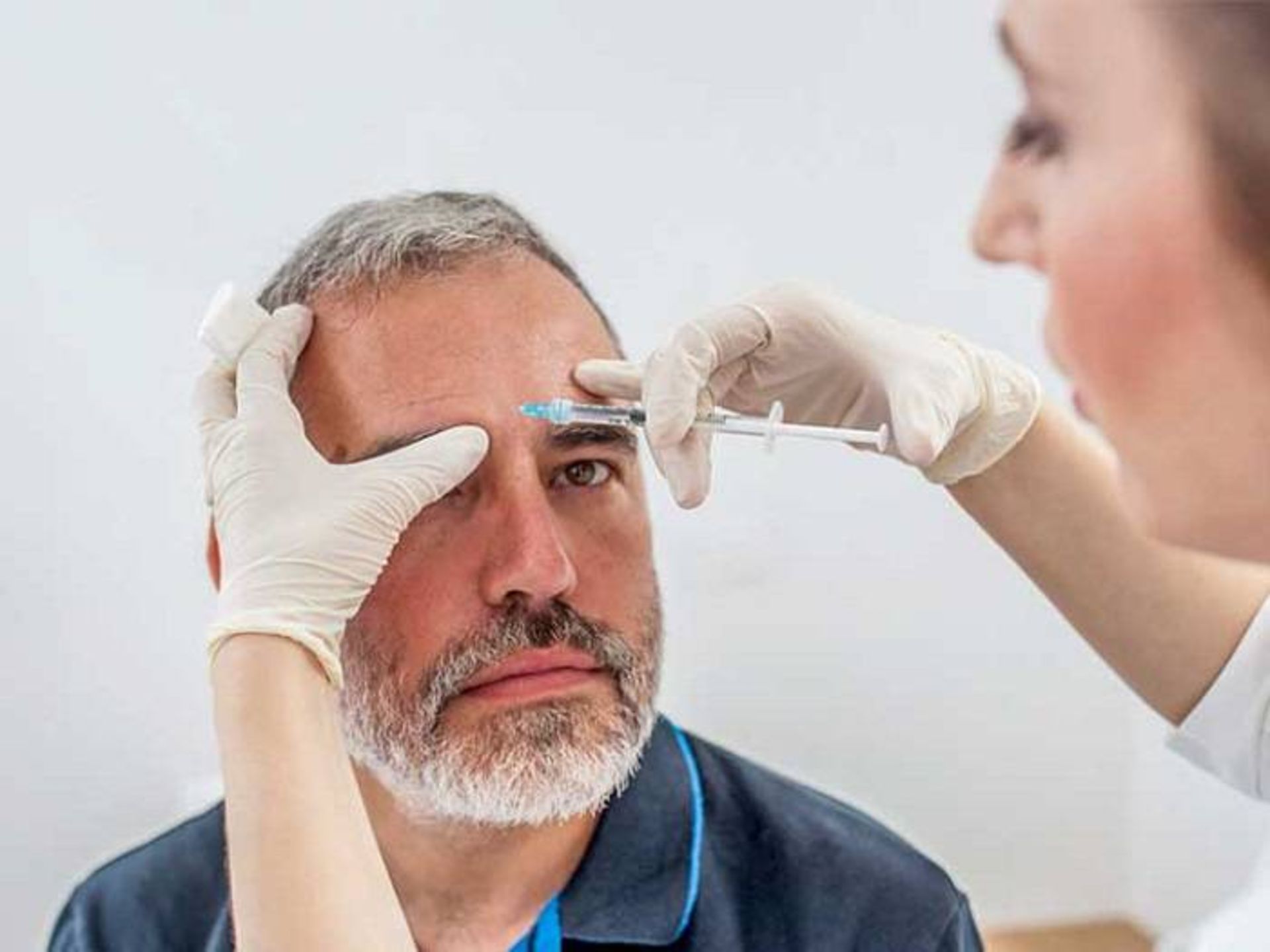
Botox injection for migraine treatment
Botox, or botulinum toxin, was approved in 2010 to treat migraine headaches in adults with chronic migraines.
Botox is a neurotoxin; A toxin produced by a bacterium called Clostridium botulinum. If a person ingests this toxin through food that has gone bad, the toxin can cause a fatal reaction called botulism because it blocks nerve signals and causes muscle paralysis. But receiving this poison by injection is safe because the poison does not enter the stomach and its amount is much less than the amount that may enter the body through rotten food.
Doctors have found that Botox injections can help smooth skin wrinkles because it relaxes the facial muscles. Also, this method of treatment can help people who have tics and spasms due to a nerve-related disease such as cerebral palsy. Doctors believe that Botox is effective in the treatment of migraine because it inhibits the neurotransmitters that transmit the pain signal in the brain.
During a study on adults who suffered from chronic migraine headaches, it was shown that botox injection reduces the number of days of migraine headaches. In another study, nearly half of people who received two Botox injections reported that the number of days per month they had headaches was halved. After 5 rounds of treatment, this number reached about 70% of people.
Botox treatment method
Every 12 weeks, the patient receives several Botox injections around the head and neck to help prevent or reduce pain. A total of 30 to 40 injections may be needed, which are used equally on both sides of the head. If a person has a headache at a certain point, more injections are given at that point. The results of this treatment method will appear two or three weeks after the first injection.
The important point here is that this type of treatment should only be obtained from a doctor who is trained in the use of Botox for migraine treatment, not people who use Botox to treat wrinkles and other cosmetic issues.
Side effects
Neck pain and headache are the most common side effects for people who have chronic migraine headaches and use Botox. In rare cases, a person may be allergic to Botox. Signs of an allergic reaction can be hives, shortness of breath, or swelling of the lower legs. Although there are no confirmed cases of Botox spreading to other parts of the body, it is possible and can be fatal. These warnings are also on the label of this medicine.

Does caffeine cause or cure headaches?
Caffeine is a substance that many people love, but it can also be a headache trigger or preventer. Caffeine is found in some drinks, chocolate, and even some common prescription and over-the-counter pain relievers, but how does it affect headaches?
Before the onset of a headache or migraine, blood vessels dilate, but caffeine has vasoconstrictor properties, narrowing the blood vessels of the brain and limiting blood flow, which helps relieve pain. When caffeine is added to the combination of acetaminophen and aspirin, the soothing effect of the drug increases by 40%.
If you feel like a headache is about to start, a cup of coffee may relieve your symptoms. On the other hand, although caffeine does not directly cause headaches, too much of it can trigger a caffeine rebound headache. Such a headache occurs when a person withdraws after consuming large amounts of caffeine continuously. Although the physical side effects can be severe, only 2% of the population suffers from this condition. Although most headache sufferers can consume up to 200 mg of caffeine per day; The National Headache Foundation in America advises patients with frequent headaches to avoid daily caffeine consumption. But this does not mean that you have to stop your caffeine consumption, try to reduce your consumption slowly and remember that moderation is always better.


You may like
-




A look at the structure of the eye and the mechanism of vision
-




Why is the prevalence of migraine higher in women?
-




Why is the colon cancer increasing in people younger than 50?
-




How did accidental release cause the 1977 Russian flu?
-

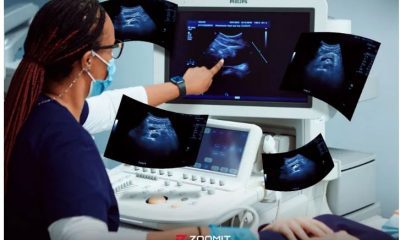


The wonderful world of ultrasound
-




How does loneliness affect the brain and body?
Noun: A mutex or other token restricting access to a resource.
Noun: A segment of a canal or other waterway enclosed by gates, used for raising and lowering boats between levels.
Noun: The firing mechanism.
Noun: Complete control over a situation.
Noun: Something sure to be a success.
Noun: A player in the scrum behind the front row, usually the tallest members of the team.
Noun: A fastening together or interlacing; a closing of one thing upon another; a state of being fixed or immovable.
Noun: A place impossible to get out of, as by a lock.
Noun: A device for keeping a wheel from turning.
Noun: A grapple in wrestling.
Verb: To become fastened in place.
Verb: To fasten with a .
Verb: To be capable of becoming fastened in place.
Verb: To intertwine or dovetail.
Verb: To freeze one’s body or a part thereof in place.
Verb: To furnish (a canal) with s.
Verb: To raise or lower (a boat) in a .
Verb: To seize (e.g. the sword arm of an antagonist) by turning one’s left arm around it, to disarm them.
Verb: To modify (a thread) so that users cannot make new posts in it.
Verb: To prevent a page from being edited by other users.
Verb: To play in the position of lock.
Noun: A small quantity of straw etc.
Noun: A quantity of meal, the perquisite of a mill-servant.
somePronoun: A certain number, at least two.
Pronoun: An indefinite quantity.
Pronoun: An indefinite amount, a part.
Determiner: A nonzero, unspecified proportion of (a bounded set of countable things): at least two.
Determiner: A nonzero, unspecified quantity or number of (an unbounded set of countable things).
Determiner: An unspecified amount of (something uncountable).
Determiner: A certain, an unspecified or unknown.
Determiner: A considerable quantity or number of.
Determiner: about (with a number).
Determiner: A remarkable.
Adverb: Of a measurement: approximately, roughly.
Adverb: To a certain extent, or for a certain period.
Pronoun: A certain number, at least two.
Pronoun: An indefinite quantity.
Pronoun: An indefinite amount, a part.
Determiner: A nonzero, unspecified proportion of (a bounded set of countable things): at least two.
Determiner: A nonzero, unspecified quantity or number of (an unbounded set of countable things).
Determiner: An unspecified amount of (something uncountable).
Determiner: A certain, an unspecified or unknown.
Determiner: A considerable quantity or number of.
Determiner: about (with a number).
Determiner: A remarkable.
Adverb: Of a measurement: approximately, roughly.
Adverb: To a certain extent, or for a certain period.
Pronoun: A certain number, at least two.
Pronoun: An indefinite quantity.
Pronoun: An indefinite amount, a part.
Determiner: A nonzero, unspecified proportion of (a bounded set of countable things): at least two.
Determiner: A nonzero, unspecified quantity or number of (an unbounded set of countable things).
Determiner: An unspecified amount of (something uncountable).
Determiner: A certain, an unspecified or unknown.
Determiner: A considerable quantity or number of.
Determiner: about (with a number).
Determiner: A remarkable.
Adverb: Of a measurement: approximately, roughly.
Adverb: To a certain extent, or for a certain period.
Noun: Something used for fastening, which can only be opened with a key or combination.
Noun: A mutex or other token restricting access to a resource.
Noun: A segment of a canal or other waterway enclosed by gates, used for raising and lowering boats between levels.
Noun: The firing mechanism.
Noun: Complete control over a situation.
Noun: Something sure to be a success.
Noun: A player in the scrum behind the front row, usually the tallest members of the team.
Noun: A fastening together or interlacing; a closing of one thing upon another; a state of being fixed or immovable.
Noun: A place impossible to get out of, as by a lock.
Noun: A device for keeping a wheel from turning.
Noun: A grapple in wrestling.
Verb: To become fastened in place.
Verb: To fasten with a .
Verb: To be capable of becoming fastened in place.
Verb: To intertwine or dovetail.
Verb: To freeze one’s body or a part thereof in place.
Verb: To furnish (a canal) with s.
Verb: To raise or lower (a boat) in a .
Verb: To seize (e.g. the sword arm of an antagonist) by turning one’s left arm around it, to disarm them.
Verb: To modify (a thread) so that users cannot make new posts in it.
Verb: To prevent a page from being edited by other users.
Verb: To play in the position of lock.
Noun: A small quantity of straw etc.
Noun: A quantity of meal, the perquisite of a mill-servant.
How to lock Android apps?
The smartphone makes a large part of our daily tasks easy, and the fact that we deal with it a lot causes a lot of personal data to accumulate in it over time, due to the sensitivity of private information, its security becomes very important. One of the old disputes between users is comparing the security of iOS and Android; But today, few people care about it anymore, because the problem is almost solved for both groups.
New versions of Android have been on the rise in terms of security over the past few years, and fortunately, unlike in the past, accessing user data has become more difficult than ever. This makes it easier for users to purchase an Android phone.
Various ways can be used to increase the security of the Android phone and improve privacy, one of which is the phone app lock. Although the main lock of the phone guarantees the security of the device to some extent; by locking apps on the phone, a layer of security is placed on sensitive data, such as photos. In addition, if a person wants to give his phone to another person for a while, he can limit their access with the help of an application lock.
Which apps can be locked?
Whether you want to protect your private information or want to prevent children from using certain apps, app locking is a useful feature to help you in such areas, but which apps can be locked on your Android phone?
There are different ways to lock apps on Android
Fortunately, on newer Androids, it doesn’t matter what kind of app you’re trying to lock. From the default apps of the operating system to the third-party apps that you have installed on your phone, all of them can be locked with the help of app lock apps. For example, it is possible to lock all popular social networking platforms including Instagram, Facebook, popular browsers such as Chrome, or even banking applications.
Another way to restrict access to apps, other than locking them, is to hide the app on Android, which is done in different ways on phones.
Phone app lock
Android phones in different brands have different user interfaces, thus different methods can be found in each of them to lock apps. In the following, we will teach the easiest ways to lock apps on Android.
App lock on Samsung
In response to the question of how to put a password on Samsung phone programs, we can suggest using the Samsung Secure Folder feature, which is considered the safest and best method for this task.
The Secure Folder feature in Samsung phones is an exclusive feature that became available to users from One UI 4 and above. This feature can not only lock apps but also hide photos, videos and other important documents. Follow the steps below to use Secure Folder.




- Enter the phone’s Settings.
- Click on Security and Privacy.
- Then scroll down and tap on More Security settings.
- Now tap on Secure Folder.
If you are not already logged in to your Samsung account, do this, and if you do not have an account, be sure to create a Samsung account.
- Click on the blue Continue button. This page displays a description of folder permissions.
It seems that to complete the setup of Secure Folder on Samsung, you need an unlimited internet connection to install the app on your phone.


- After completing the installation process, you must choose one of the methods to lock the program in addition to fingerprint, which can be one of PIN, Password, or Pattern according to your taste.
- At the bottom of the screen, by activating the Reset with Samsung account option, you can recover the password of the secure folder through the Samsung account.
- Now the Next option is displayed at the bottom of the screen; Tap on it to enter the secure folder environment.
- To add apps to the secure folder, touch the + sign in the upper right corner.
- A list of apps will be displayed. You can filter them based on the source they were installed from to make your search easier.
- As in the picture below, please select the desired programs and click on the Add option to create a separate copy of it in the secure folder.
Be careful that by adding the application to the safe folder, two different and separate versions of the applications will be created in the phone. One is the normal version that is among other phone programs and is easily available without a password, and the other is the version in the Secure Folder that you need a password to access. Also, the contents stored in each program are different from each other and have nothing to do with each other.
To change the settings of the secure folder of the Samsung phone, you can enter the Secure Folder settings by touching the three dots and change the method of entering the program according to your needs or even delete the program.

If you exit the Secure Folder program, to enter it, you must look for the Secure Folder icon among other applications and enter it by touching the icon and entering the password. Of course, you can always change the app’s appearance by changing the icons of the apps on Android so that it is not possible for others to recognize Secure Folder.
Pay attention when you turn the phone off and on, the safe folder icon will be hidden. To activate the icon, you must turn on the Secure Folder option in the Quick Panel section (where Bluetooth, Wi-Fi, and other buttons are located). If this option is not in your quick access panel, add it.
The good news for people who have created a workspace on Android with the help of Shelter or Island apps is that there is no problem with Work Profile by setting up Secure Folder.
How to lock Android apps?
Lock apps on Xiaomi phones
Xiaomi phones and tablets, like Samsung devices, do not have a complicated way to lock apps, and everything is done in the simplest possible way. To activate the Xiaomi app lock, follow the steps below:



- Enter Settings.
- Tap on the Apps section.
- Now tap on App lock in the last row.
- Here is a list of programs.
- Lock any desired program by turning on the lock option in front of it.
During the process of locking apps on your Xiaomi phone, you may be asked to log in to your Xiaomi account. Of course, this step is not necessary and you can easily ignore it.
How to lock Android apps?
Lock the app on Android
To lock the application in pure Android that we see on Google Pixel phones, you can use the Private Space feature. Earlier, we discussed this functionality in detail in the features of Android 15. This feature is very similar to Secure Folder in Samsung phones and creates a separate copy of each application.
Locking the Private Space profile hides apps from settings, notifications, and recent apps. To set it up, you need to go through the following steps:





- Enter Settings.
- Scroll down a bit and tap on Security & Privacy.
- Scroll down and touch Private Space, and you’ll immediately be asked to verify your identity with your fingerprint. In Private Space in Android 15, it is possible to log in with a separate Google account so that the programs do not interfere with each other.





- After launching Private Space, now enter the applications drop-down menu.
- Scroll down the list of apps.
- Tap on the lock icon and open it with the specified password to access the list of Private Space applications.
Lock apps on Huawei phones
Locking apps on Huawei devices is also done through phone settings and without the need to install a special application.
- Enter Settings.
- Scroll down and tap on Security.
- Enter App Lock.
- Click Enable on this page.
- A small window will open in which you have to choose a password between the Lock screen password (the same as the original password) and a Custom PIN (an exclusive password to lock the application).
- By selecting Custom PIN, you will be taken to a page where you have to define a 6-digit PIN to lock apps.
- It will ask you for the PIN one more time for confirmation and finally, you have to answer the security question so that you can get help from it to recover the password in the future. There are a variety of security questions that you can choose at will or even add your own question to the list and click FINISH at the end.
- Now enable app lock for your favorites from the apps list.
Read more: How to use iMessage on Android?
Ability to automatically lock programs
In addition to the methods that different user interfaces have considered for locking programs, some programs also support such a feature in their settings, which allows the user to automatically lock the program if he does not work with the program for a certain period of time by activating it.
Note that in order to use the automatic lock function of WhatsApp and Telegram, you must first register your screen lock and fingerprint in the phone settings.
Lock WhatsApp
WhatsApp Messenger, owned by Meta, is one of the most popular messaging apps in the world. The developers of this program have always paid a lot of attention to the security of their users’ messages and information and provide the ability to automatically lock the program. Follow the steps below to lock the WhatsApp application:




- Launch the WhatsApp app and tap on the three dots on the top right.
- Go to Settings and click on Privacy.
- Scroll down and tap the App lock option.
- On the new screen, check the Unlock with fingerprint option to activate the WhatsApp app lock.
- In the bottom row, by selecting the first option (Immediately), the user will be asked for a password immediately after exiting the program and needs to scan a fingerprint every time to log in. The next automatic lock option is activated after one minute and the last option after 30 minutes.
- By enabling the Show content in the notifications option, a preview of received messages will still be displayed in the notifications section.
Lock Telegram
Telegram also offers a similar feature to lock the program, which is activated as follows:



- Open the Telegram app and then go to Settings.
- Click on the Privacy and Security option.
- Enter the Passcode Lock section, activate it, and then set the password and how to enter the program and the time period of the automatic lock.
There are other apps that provide auto-lock. For example, LinkedIn is one app that you can lock using a built-in feature.
With the methods we taught in this article, you can easily lock the desired programs in different ways. Also, iPhone users can add a layer of security to their personal information and apps by learning how to lock iPhone apps.
Some users wish that when they give their Android phone to another person, that person cannot exit the particular program that they intend to use. You can easily do this by using the app pin feature in Android.
Now it’s your turn, dear Zomit users, to say which method do you prefer to use to lock Android apps.
economy
Starlink; Everything you need to know about SpaceX Satellite Internet
Published
1 month agoon
28/09/2024

YouTubeProper noun: A video-sharing website.
Noun: Any website that allows users to upload content, particularly YouTube itself.
Noun: A small video that can be viewed online, particularly one hosted on YouTube.
Noun: Collectively, the users of YouTube; especially the content creator’s viewers.
Verb: To search for and view on YouTube.
Proper noun: A video-sharing website.
Noun: Any website that allows users to upload content, particularly YouTube itself.
Noun: A small video that can be viewed online, particularly one hosted on YouTube.
Noun: Collectively, the users of YouTube; especially the content creator’s viewers.
Verb: To search for and view on YouTube.
Proper noun: A video-sharing website.
Noun: Any website that allows users to upload content, particularly YouTube itself.
Noun: A small video that can be viewed online, particularly one hosted on YouTube.
Noun: Collectively, the users of YouTube; especially the content creator’s viewers.
Verb: To search for and view on YouTube.
Proper noun: A video-sharing website.
Noun: Any website that allows users to upload content, particularly YouTube itself.
Noun: A small video that can be viewed online, particularly one hosted on YouTube.
Noun: Collectively, the users of YouTube; especially the content creator’s viewers.
Verb: To search for and view on YouTube.
Proper noun: A video-sharing website.
Noun: Any website that allows users to upload content, particularly YouTube itself.
Noun: A small video that can be viewed online, particularly one hosted on YouTube.
Noun: Collectively, the users of YouTube; especially the content creator’s viewers.
Verb: To search for and view on YouTube.
Preposition: into.
Verb: To enclose.
Verb: To take in; to harvest.
Adverb: At or towards the interior of a defined space, such as a building or room.
Adverb: Towards the speaker or other reference point.
Adverb: So as to be enclosed or surrounded by something.
Adverb: After the beginning of something.
Noun: A position of power or influence, or a way to get it.
Noun: One who, or that which, is in; especially, one who is in office.
Adjective: Located indoors, especially at home or at one’s office or place of work.
Adjective: Located inside something.
Adjective: Falling or remaining within the bounds of the playing area.
Adjective: Inserted or fitted into something.
Adjective: Having been collected or received.
Adjective: In fashion; popular.
Adjective: Incoming.
Adjective: Furled or stowed.
Adjective: Of the tide, at or near its highest level.
Adjective: Currently batting.
Adjective: Having familiarity or involvement with somebody.
Adjective: Having a favourable position, such as a position of influence or expected gain, in relation to another person.
Adjective: Burning; ablaze.
Adjective: Having used, consumed or invested a certain amount.
Preposition: into.
Verb: To enclose.
Verb: To take in; to harvest.
Adverb: At or towards the interior of a defined space, such as a building or room.
Adverb: Towards the speaker or other reference point.
Adverb: So as to be enclosed or surrounded by something.
Adverb: After the beginning of something.
Noun: A position of power or influence, or a way to get it.
Noun: One who, or that which, is in; especially, one who is in office.
Adjective: Located indoors, especially at home or at one’s office or place of work.
Adjective: Located inside something.
Adjective: Falling or remaining within the bounds of the playing area.
Adjective: Inserted or fitted into something.
Adjective: Having been collected or received.
Adjective: In fashion; popular.
Adjective: Incoming.
Adjective: Furled or stowed.
Adjective: Of the tide, at or near its highest level.
Adjective: Currently batting.
Adjective: Having familiarity or involvement with somebody.
Adjective: Having a favourable position, such as a position of influence or expected gain, in relation to another person.
Adjective: Burning; ablaze.
Adjective: Having used, consumed or invested a certain amount.
Preposition: into.
Verb: To enclose.
Verb: To take in; to harvest.
Adverb: At or towards the interior of a defined space, such as a building or room.
Adverb: Towards the speaker or other reference point.
Adverb: So as to be enclosed or surrounded by something.
Adverb: After the beginning of something.
Noun: A position of power or influence, or a way to get it.
Noun: One who, or that which, is in; especially, one who is in office.
Adjective: Located indoors, especially at home or at one’s office or place of work.
Adjective: Located inside something.
Adjective: Falling or remaining within the bounds of the playing area.
Adjective: Inserted or fitted into something.
Adjective: Having been collected or received.
Adjective: In fashion; popular.
Adjective: Incoming.
Adjective: Furled or stowed.
Adjective: Of the tide, at or near its highest level.
Adjective: Currently batting.
Adjective: Having familiarity or involvement with somebody.
Adjective: Having a favourable position, such as a position of influence or expected gain, in relation to another person.
Adjective: Burning; ablaze.
Adjective: Having used, consumed or invested a certain amount.
Preposition: into.
Verb: To enclose.
Verb: To take in; to harvest.
Adverb: At or towards the interior of a defined space, such as a building or room.
Adverb: Towards the speaker or other reference point.
Adverb: So as to be enclosed or surrounded by something.
Adverb: After the beginning of something.
Noun: A position of power or influence, or a way to get it.
Noun: One who, or that which, is in; especially, one who is in office.
Adjective: Located indoors, especially at home or at one’s office or place of work.
Adjective: Located inside something.
Adjective: Falling or remaining within the bounds of the playing area.
Adjective: Inserted or fitted into something.
Adjective: Having been collected or received.
Adjective: In fashion; popular.
Adjective: Incoming.
Adjective: Furled or stowed.
Adjective: Of the tide, at or near its highest level.
Adjective: Currently batting.
Adjective: Having familiarity or involvement with somebody.
Adjective: Having a favourable position, such as a position of influence or expected gain, in relation to another person.
Adjective: Burning; ablaze.
Adjective: Having used, consumed or invested a certain amount.
Starlink; Everything you need to know about SpaceX Satellite Internet
Approximately 3 billion people or about 40% of the world’s population are deprived of access to the Internet, and many of the 4.5 billion current subscribers do not have access to high-speed, cheap, and high-quality Internet.
This article was first written on November 25, 2019, by Masoud Tavakoli and will be updated over time.
For this reason, the news of the arrival of Starlink satellite internet has given hope to many users. In this article, we are going to learn more about satellite internet, especially the Starlink SpaceX project. Stay with Zoomit.
-
What is satellite internet?
-
Low latency and universal service
-
High speed and capacity
-
Starlink satellite internet; History and technologies
-
Criticisms of Starlink
-
Who will Starlink be for?
-
Residents of remote areas
-
Financial markets and military applications
-
Areas covered by Starlink satellite internet
-
Starlink satellite internet price
-
Starlink competitors
-
Starlink satellite internet in Iran
-
Direct to Cell service; Satellite internet for phone
What is satellite internet?
Satellite internet is not a new phenomenon and there are already companies that provide satellite internet services. The biggest satellite internet providers are currently two companies, ViaSat and HughesNet. It is interesting to know that both of these companies first offered their satellite internet service in 2012, and Heusnet has 1.3 million subscribers in the United States.
But why is the story different this time and the whole world is eagerly following the news of the Starlink project and impatiently waiting for the launch of SpaceX satellite internet?
The answer to the above question lies in the difference between the Starlink satellite system and other Internet satellite systems offered by other companies:
- Starlink is supposed to be global and theoretically its serviceability will not be specific to a specific geographical region.
- Due to the larger number of satellites, Starlink will have much more bandwidth and as a result will serve many more users.
- Most importantly, Starlink has much higher speed and much lower latency than other satellite internet.
Low latency and universal service
Until now, one of the most important disadvantages of satellite internet has been its very high latency and limited service to a specific country or continent. The reason for this long delay and geographic limitation is that satellite internet service provider companies used to place their satellites in geostationary orbit or GEO. The rotation speed of the satellites placed in this orbit is equal to the rotation speed of the earth around itself, and as a result, the satellite practically remains fixed at a fixed point in the sky from the point of view of the terrestrial observer.
Also, the 35,000 km altitude of these satellites causes the internet delay they provide to reach 550 milliseconds in the best case and up to 600 milliseconds in practice. Such latency makes traditional satellite Internet services unsuitable or even practically unusable for applications such as audio-visual communication and video games.
Starlink satellites are 70 to 100 times closer to Earth than conventional telecommunication satellites
But the Starlink satellites are supposed to be in low earth orbit or LEO with an altitude of 500 km in the first phase and 300 km in the later phases (that is, 70 to 100 times closer than GEO satellites). The same thing makes the delay of Starlink satellite internet theoretically even lower than optical fiber.
But how is it possible that a signal that goes to space and returns to the Earth will reach its destination faster than a signal that travels a shorter path in an optical fiber? The answer lies in the difference in the speed of light and electromagnetic waves in glass (optical fiber) and vacuum: the speed of light in optical fiber is only two-thirds of the speed of electromagnetic waves in vacuum.
According to the results of speed tests that have just been published, it has been determined that the delay of Starlink Internet is currently between 30 and 90 milliseconds, and some users have even reported delays of 20 and 21 milliseconds.
Elon Musk had previously said that with the implementation of the next phase, the delay of Starlink can be reduced to 8 milliseconds. This means that for the first time satellite internet can be used for purposes such as voice and video calls and video games.
High speed and capacity
Another disadvantage of satellite internet was the small number of satellites in orbit, which made many users have to share the bandwidth of a satellite with each other, which consequently reduced the speed of satellite internet subscribers. The small number of satellites also limits the number of potential users. For example, even if Viast and Heusent had global coverage, they could not serve tens or hundreds of millions of people to avoid severe speed drops.
 The first part of the first phase of Starlink will consist of 1584 satellites in 24 orbital planes
The first part of the first phase of Starlink will consist of 1584 satellites in 24 orbital planes
SpaceX, however, plans to send many more satellites into space to provide the Internet. If everything goes according to plan, SpaceX will have at least 10 more launches this year, bringing the number of active satellites in Earth orbit to over a thousand. At the end of the first phase, the number of SpaceX satellites will be more than 4,000 and finally, the total number of satellites will reach an incredible number of 40,000.
For comparison, Viast currently has only 4 satellites in Earth orbit. It is interesting to know that before the start of the Starlink project, there were only about 1500 active satellites in the Earth’s orbit. This means that SpaceX is going to send more than 25 times the total number of active satellites currently in Earth orbit.
Starlink satellite internet; History and technologies
For the first time in 2018, SpaceX sent two communication satellites named Tin-Tan A and Tin-Tan B to low earth orbit to test satellite internet. After conducting various tests, SpaceX launched its own satellite production line in Redmond, Washington, to launch the first batch of 60 Starlink satellites in mid-2019, called v0.9 (read V Point Nine) or the ninth version. slow This batch of 60 was also experimental and now it has been retired and will eventually enter the earth’s atmosphere.
At a very short distance, in late 2019, SpaceX sent the first shipment of 60 operational Starlink version 1 satellites into space, and from that date to the moment of writing this article, during 14 launches with Falcon 9 rockets, more than 800 Starlink version 1 satellites have been put into orbit. put the ground
Each Starlink satellite weighs 227 kg and provides a maximum bandwidth of 20 Gbps. SpaceX has spent many innovations to make Starlink, which may require a separate article to fully explain each of them. For this reason, we briefly mention the most important specifications and features of Starlink satellites.
All the features and specifications of Starlink satellites are primarily designed to lower the final price of the satellite, not to be revolutionary and first. There are already satellites in orbit with similar or more advanced technologies than Starlink, but none of them are comparable to Starlink in terms of cost. For example, the price of Iridium satellites (which previously held the record for the cheapest commercial satellites) is $5 million per satellite; While the finished price of Starlink satellites is estimated to be 20 times cheaper and equal to only 250 thousand dollars per satellite.
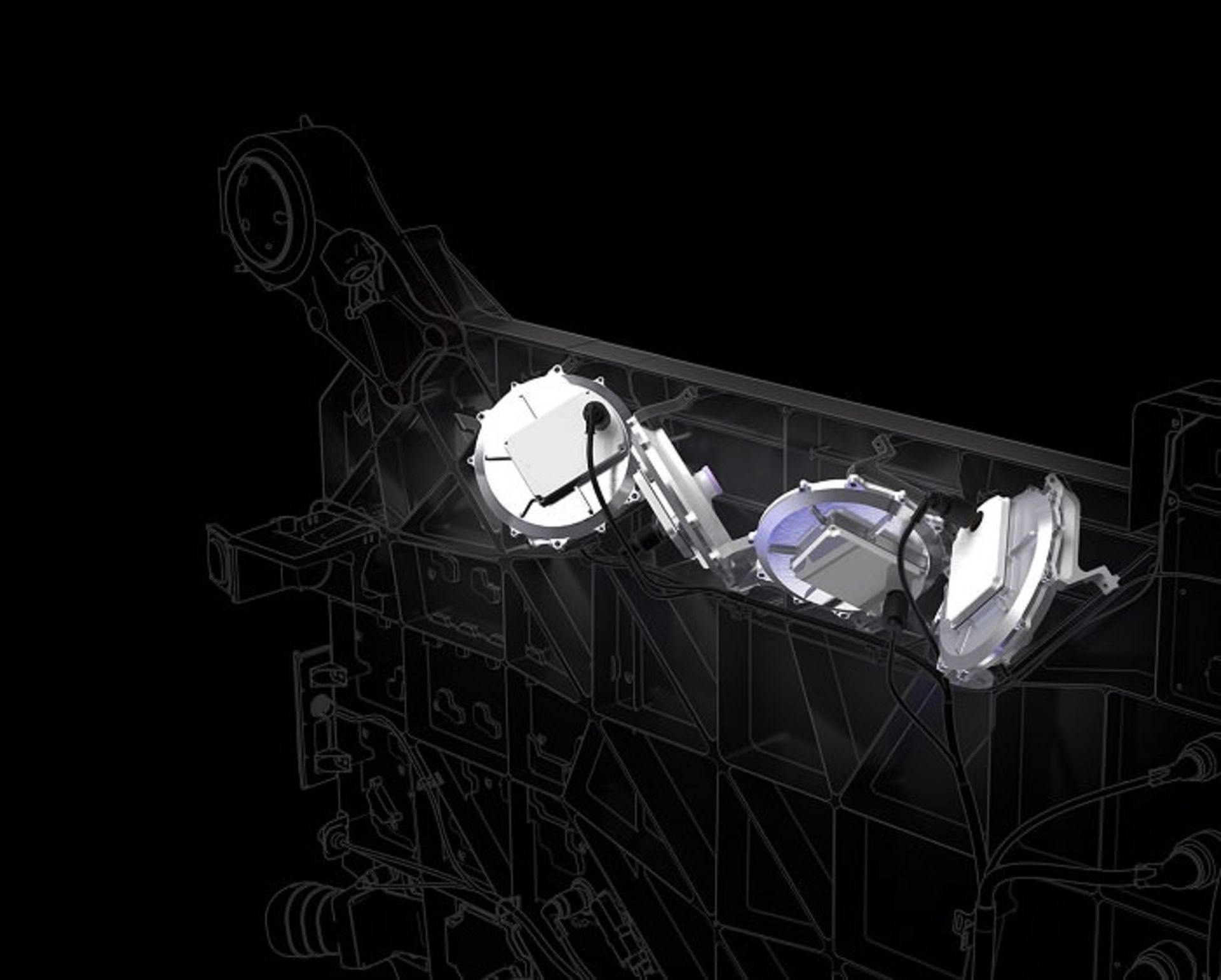
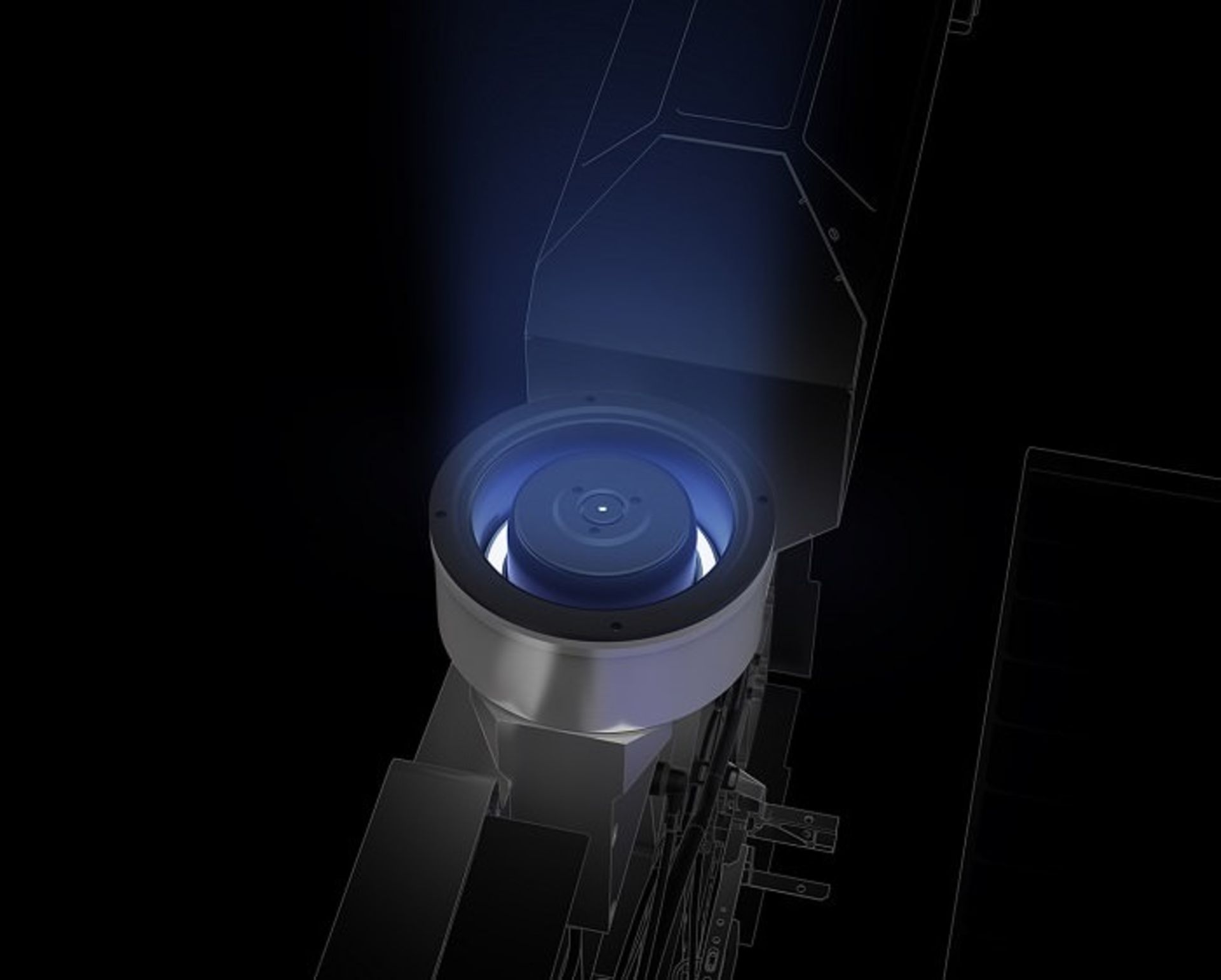
For the first time in history, a space company is mass-producing satellites in a factory production line. This will greatly reduce the final cost of the satellite, which was previously made individually and in laboratory conditions. Currently, SpaceX produces 120 satellites per month (4 satellites per day).
The mechanism of separation of Starlink satellites from the second stage of the rocket in the orbit is also unique in its kind. Before satellites were separated from the second stage of the rocket using spring or explosive mechanisms (pyrotechnics), which has its own complications. SpaceX, however, to launch the satellites into orbit, first rotates the second stage of the rocket around itself, and then by releasing the rod that holds the satellites together, it releases all 60 satellites into orbit at once. The satellites then slowly separate from each other due to the centripetal force caused by the rotation of the second stage.
 Starlink V1.5 vs. Starlink V2 Mini
Starlink V1.5 vs. Starlink V2 Mini
Starlink satellites are also the first satellites to use Kryptonian ion engines for propulsion in orbit. Until now, xenon gas was used to fuel ion engines in satellites, which, although it has a better performance than krypton in ion engines, its price is much higher.
Unlike other satellites, Starlink satellites only have solar panels on one side; But this same panel is so big that their total area in each 60 launch is more than the total area of the solar panels of the International Space Station. The use of only one integrated panel on one side of the satellite is another decision that helps to simplify the manufacturing process, ease the opening of the satellite in orbit, and ultimately lower the finished price.
It is not possible to connect to satellite internet using only a mobile phone
To connect to satellite internet, including Starlink, the user must use special antennas. That is, contrary to the common misconception, there is no 4G or 5G satellite internet that can be connected easily with a phone without any special equipment, nor will such internet be offered in the near future.
Starlink uses special antennas called Phased Array Antenna to send and receive data both on the satellite and on the user’s dish. The interesting feature of these antennas is that they can send their signal in the Ku and Ka frequency bands in different directions without the need for physical rotation, just by using the superposition of waves .
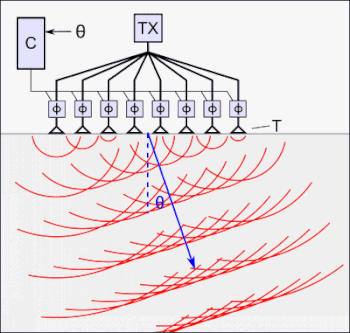 Phased array antennas change the direction of sending waves only by using the superposition feature.
Phased array antennas change the direction of sending waves only by using the superposition feature.
Elon Musk had previously said that Starlink’s antennas are the size of a pizza; But as it became clear from the videos that were leaked some time ago, the size of an American pizza is apparently much bigger than the rest of the world.
As we said, due to the nature of phased array antennas, there is no need to adjust them to a specific direction; However, after installation, the antenna automatically and only once adjusts its position to the side of the sky where the largest number of Starlink satellites are located, or the side where there is the least physical obstacle between the antenna and the sky.
Setting up the system required to use Starlink satellite internet is supposed to be as simple as possible so that the user has a so-called plug and play experience. According to Elon Musk, the steps to start Starlake Internet are as follows :
- Turn on the antenna
- Point the antenna toward the sky
These two steps are not in any particular order.
Looks like a thin, flat, round UFO on a stick. Starlink Terminal has motors to self-adjust optimal angle to view sky. Instructions are simply: – Plug in socket – Point at sky These instructions work in either order. No training required.
– Elon Musk (@elonmusk) January 7, 2020
As mentioned, the antenna is equipped with a motor and automatically adjusts its position only once and then remains fixed.
Criticisms of Starlink
In the short time since the launch of Starlink satellites into space, not all observers have been praising SpaceX as much as enthusiastic high-speed Internet users. In the meantime, many people, including those interested in astronomy, have criticized SpaceX’s move to send thousands of satellites into low Earth orbits. The concern of these people is, on the one hand, the problem of creating space debris and the emergence of Kessler’s syndrome (conditions like the movie Gravity) and on the other hand, the visual contamination of the night sky for astronomical observations in the future.
In response to these criticisms, SpaceX says that the operational altitude of the Starlink satellites is so low that even if all of them fail in orbit or cause the Kessler effect in collisions with each other and other satellites, within a short period of time (only a few years) all the remnants of the satellites Upon re-entering the Earth’s atmosphere and burning up in the atmosphere, they will be destroyed and no debris will remain in space.
At an altitude of 500 km from the earth’s surface, although the conditions are close to vacuum, the very high speed of satellites (about Mach 21 or 7 times the speed of a bullet) causes even the presence of very small amounts of gases in the earth’s atmosphere in this orbit to create a significant drag force on the satellite. slow This is why the satellites in this orbit must constantly increase their orbit, otherwise, with the passage of time and the decrease in the height of the orbit, they will re-enter the earth’s atmosphere and burn up in it.

On the other hand, the concern of astronomy enthusiasts about Starlink is not unanswered:
First of all, the images and videos from Starlink satellites that are going viral on social networks are all related to the moments after sunset or before sunrise and shortly after the satellites are placed in a 200 km orbit (in the initial phase of elevation). After reaching an operational altitude of 500 km, the brightness of the Starlink satellites will be greatly reduced and they will no longer be visible to the naked eye.
Second, most modern astronomy is already done using orbiting satellites and space telescopes (such as Hubble, Chandra and TESS ); which Starlink has no effect on. Other ground-based telescopes can improve their images and observations by knowing Starlink’s exact orbital information and using computer algorithms.
With all these words, SpaceX has not forgotten the lovers of amateur astronomy and the night sky, and with changes in the color and type of satellite coating, as well as equipping new satellites with a visor, the albedo index or Starlink reflection has been greatly reduced so that all We can still enjoy the night sky.
Starlink has also brought criticism from environmental organizations. In a lawsuit against the US Federal Aviation Administration (FAA) filed in May 2023 in US federal court in Washington, DC, environmentalists claim that the agency did not adequately monitor the launch of SpaceX’s Starship rocket from South Texas.
Environmental organizations say that during the first Starship launch, which was carried out on April 31, debris and ash fell over a large area, including the land adjacent to the launch site, which is the habitat of endangered species. scattered

A damaged starship launch pad

The remains of rock and cement scattered on the ground after the launch of the starship

A large piece of metal about a kilometer away from the starship launch pad

Dust and smoke as the starship takes off from Earth
In response, Elon Musk said that the company is taking measures to prevent similar incidents; including the installation of a large steel plate and the water spout system under the rocket.
Musk added that the scattered debris is only sand and rock, and as a result, there is nothing toxic. He considered the consequences of the Starship launch to be like a sandstorm and said: “Basically, it is a man-made sandstorm. But we don’t want this to happen again.”
Who will Starlink be for?
Earlier in Zomit in a comprehensive article by Milad Mirkani titled “ Why SpaceX is developing the Starlink project?” We have answered this question in detail. What follows is a short and simple explanation of why and the philosophy behind the development of Starlink. It is recommended to read the above article to learn more about the technical aspects.
Although SpaceX has stated the goal of Starlink to provide high-speed and cheap Internet around the world, it should be noted that these are the ultimate and long-term goals of the project, and in the short term, none of them will probably be realized.
Starlink internet speed is lower than some DSL services and its subscription fee is even more expensive than gigabit internet.
If you’ve seen Starlink’s speed test results released over the past few days, you’ve probably noticed that its 17-60Mbps speed (and even the high 100Mbps speed promised in the first phase of operation) isn’t that revolutionary. Even now, the speed of optical fiber and even most DSL services in developed countries is higher than the speed of Starlink.
On the other hand, as it has just been determined, the price of Starlink satellite internet is much higher than other types of high-speed internet. The cost of a Starlink satellite internet subscription will be 99 dollars per month, while the average monthly price of a DSL internet subscription in the US is 43 dollars. cable internet is $58, fiber optic internet is $56, and even gigabit internet is only $80.
In addition to the monthly subscription price, due to the $500 price of the Starlink dish (phased array antenna), the initial cost of setting up Starlink is also much more expensive than other types of high-speed Internet.
Considering that the speed of Starlink is average by the standards of developed countries and it is considered one of the most expensive internet services in terms of price, then for whom and what target market does SpaceX consider Starlink?
Residents of remote areas
First of all, it should be noted that even in developed countries, high-speed Internet has not yet reached many remote areas. Although the Internet speed is very high in the big cities of developed countries, and fiber optic services with gigabit speed have made Internet access similar to home and office network access, the vast size of countries such as America, Canada, Australia, and Russia makes it possible to serve all It makes parts of the country very difficult or impossible. ( You can read this article to compare the price, speed, and quality of the internet in Iran with other parts of the world ).
According to statistics published in 2017, 35 percent or 22 million Americans who live in non-urban areas still do not have access to broadband Internet, and an incredible two million people still use dial-up Internet. As another example, 2.5 million Australians still have no access to the Internet (either high-speed or low-speed).
That is why governments have provided many financial incentives for companies that can bring internet to these areas. For example, the US government provides 16 billion dollars in subsidies to companies that can provide high-speed internet to non-urban areas. Starlink will be an ideal option to bring internet to these areas and these people.
Financial markets and military applications
Internet latency is so important to financial markets that they are willing to spend millions of dollars to reduce it by even a few milliseconds. For example, in 2011, Hibernia and Huawei laid 3,000 miles of optical fiber cable under the Atlantic Ocean during a $400 million project to reduce the communication time between London and New York financial markets by only 5 milliseconds. That means 400 million dollars in cost, just to reduce the delay by 5 milliseconds.
Financial markets are willing to spend millions of dollars to reduce the latency of their Internet connections
According to the simulations done by Mark Handley, UCL University professor of Starlink network topology, even with its current structure, Starlink can further reduce the delay time of the said route (London-New York) and similar routes from optical fiber. One can imagine that financial markets around the world would be willing to pay SpaceX a fortune to use Starlink and reduce their internet latency.
It is interesting to know that Starlink does not use laser inter-satellite communication or Laser Link in its first phase. This means that the current latency is achieved using ground station connections, and in future versions, it is possible to further reduce Starlink Internet latency.
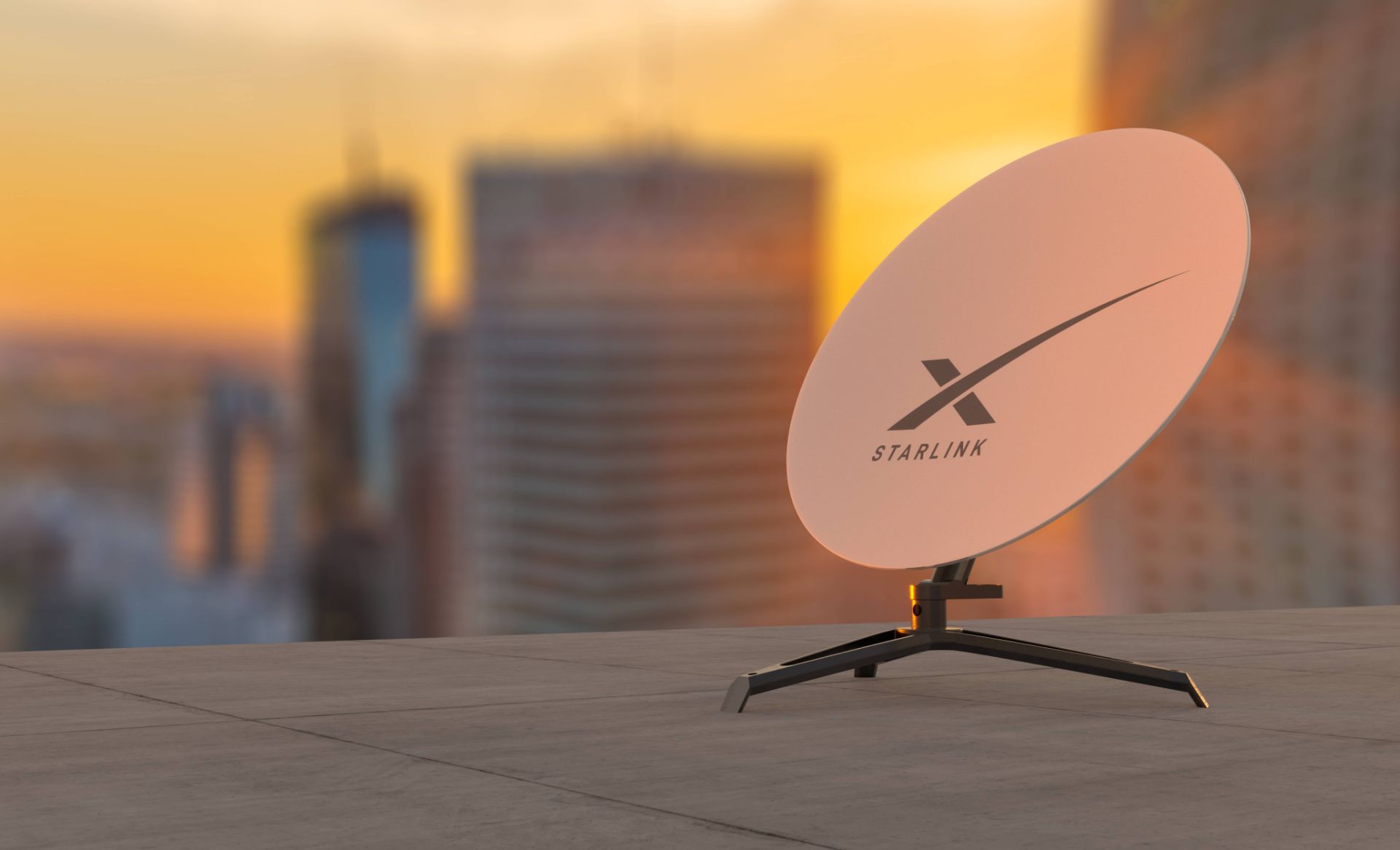
Starlink is also ideal for military operations in remote locations. That is why, even before the project became operational, the US military had already signed a contract with SpaceX to use Starlink.
In summary, Starlink is in its initial phase to bring internet to remote areas and serve specific commercial, government, and military customers; Not competing with traditional ISPs.
But the potential of this seemingly small target market has made SpaceX predict that by 2025, Starlink’s revenue will exceed the total of SpaceX’s revenue, and therefore it will probably offer its shares publicly on the stock market as a separate company.
Forbes has predicted that Starlink’s annual revenue will reach more than $10 billion by 2025, and Starlink’s standalone company value will be more than $30 billion. It is not without reason that Elon Musk looks at Starlink as a source of income for the development of the Starship rocket and the construction of a colony on Mars.
Areas covered by Starlink satellite internet
Elon Musk plans to eventually cover all parts of the world with Starlink satellite internet; Currently, only a few countries (America, Canada, England, France, Germany, Netherlands, Belgium, Switzerland, Denmark, Portugal, Australia, and New Zealand) and in certain regions benefit from the facilities of this service, and the possibility of pre-ordering in Italy, Poland There are also Spain and Chile.
The global coverage of Starlink satellite internet is only possible with 10,000 satellites in the earth’s orbit, and currently, the number of satellites in orbit is less than this amount. As of December 20, 2020, only 0.08% of Americans had access to Starlink Internet, and at that time the Starlink project was still in the experimental stage, with a maximum download speed of 100 Mbps and a maximum upload speed of 10 Mbps.
Starlink satellite internet price
On October 28, 2020, SpaceX officially sent the Starlink public beta invitation to pre-registered users to determine the cost of using Starlink satellite internet and the price of its dish (phased array antenna) after a long period of speculation.
According to SpaceX, the monthly cost of using the Starlink service is $110, which includes taxes and other fees. In addition, the subscribers of this service must pay the initial cost of 599 dollars to receive the wave receiver terminal and a special modem.
Of course, the monthly subscription fee of $110 for internet service is a high amount, but this amount. It’s still slower than the internet speeds offered by fiber optic in the US. Musk claims that the cost of $599 for the purchase of Starlink Internet equipment will decrease in the coming years; Because SpaceX plans to reduce the production cost of receiver terminals in the near future with the help of different methods.
Starlink competitors
Starlink is not the only satellite internet project under development. The most important competitors of Starlink, which theoretically can provide a comparable Internet service, are OneWeb and Amazon’s Project Kuiper.
One Web
OneWeb was originally supposed to be a satellite system consisting of 650 telecommunication satellites at an altitude of 1200 km from the Earth’s surface. With the spread of the coronavirus and the collapse of the financial markets, Softbank, the largest investor in One Web, decided to end its investment in this company, and as a result, One Web declared bankruptcy in March 2020.
OneWeb had placed 74 satellites in Earth orbit before declaring bankruptcy, and even after bankruptcy, it applied to the FCC for permission to send another 48,000 satellites. Finally, in July 2020, it was announced that the British government won the auction for the purchase of OneWeb with a bid of 500 million dollars. Many speculate that due to Britain’s exit from the European Union, the country’s purpose in buying this satellite system is to create a global positioning system similar to GPS and the European equivalent of Galileo, not to provide satellite internet services.
It is interesting to know that two Chinese companies, along with SpaceX and Amazon, were also among the participants in the OneWeb auction. Since the FCC only allows each company to use a certain wavelength of electromagnetic waves, it is likely that the goal of SpaceX and Amazon in buying this bankrupt company was only to acquire the right to use OneWeb’s wavelength spectrum, not to acquire satellites and its technologies.
The Kuiper Project
Amazon announced in April 2019 that it plans to send thousands of satellites into low Earth orbits (between 590 and 630 km) to provide high-speed Internet access to millions under the Kuiper project ( named after an asteroid belt at the outer edge of the solar system). provide someone

The head of the Kuiper project at Amazon is Rajiv Badyal, who was previously the vice-chairman of the Starlink project at SpaceX. Amazon has yet to launch any satellites into Earth orbit, but it is expected to be launched atop reusable rockets from Blue Origin (Jeff Bezos’ rocket company) once the New Glenn rocket is operational.
In addition to the two mentioned companies and SpaceX, there is news from time to time about the plans of other companies such as Apple and Samsung to create a satellite system; But considering that the cost of launching a rocket into space is still much higher than the cost of building a satellite (even for SpaceX, which is a rocket company and uses self-made reusable rockets), Amazon’s Kuiper project seems to be the only serious competitor to Starlink.
Read more: James Webb vs. Hubble; Comparing the images of two space telescopes
Direct to Cell service; Satellite internet for phone
SpaceX has begun advertising Direct Cell satellite service on the official Starlink website, which adds satellite Internet to “existing LTE phones”; Without the need for any changes in the hardware and software of the phones. Also, the user does not need to install a special application to access the message, call and satellite internet service.
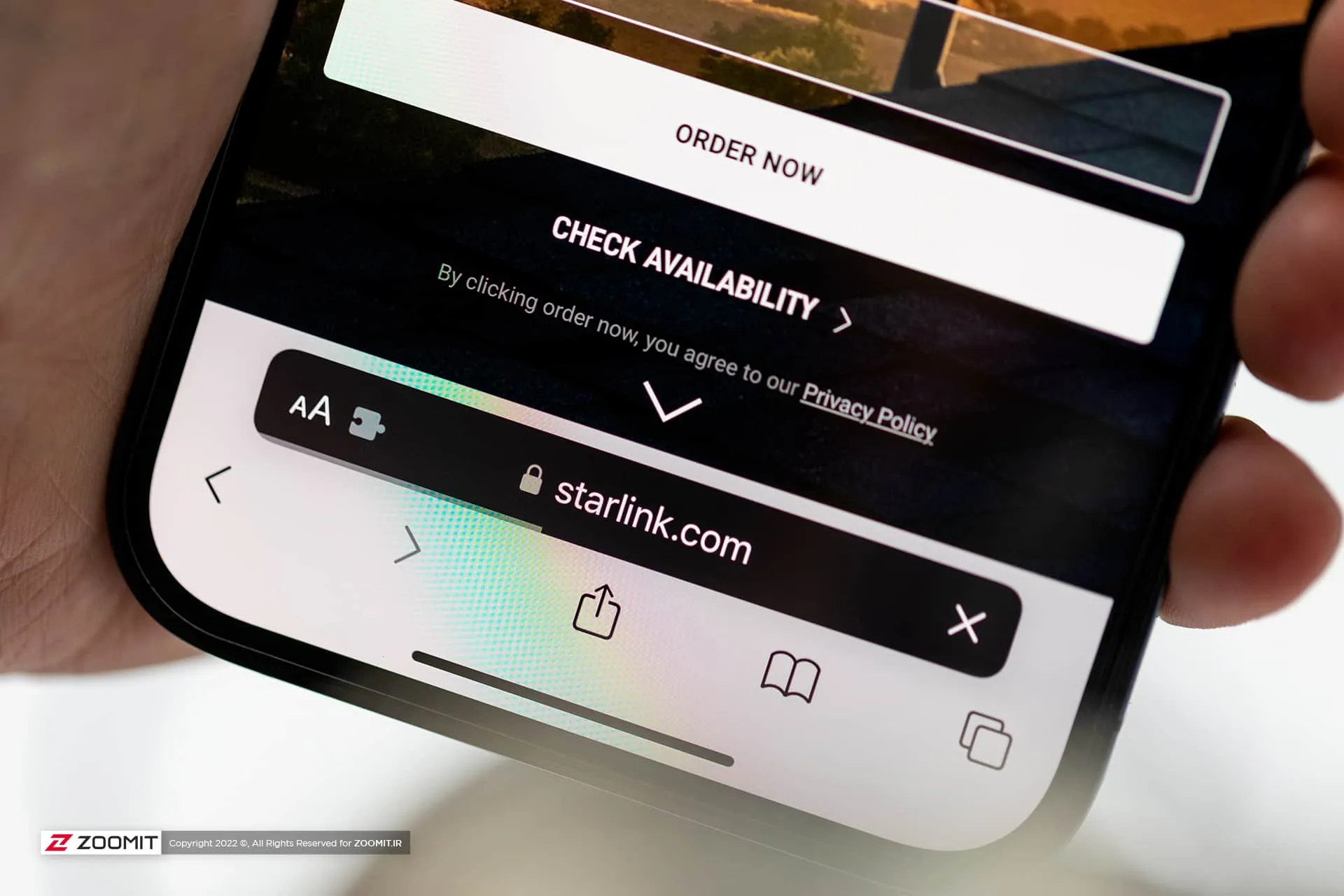
According to SpaceX, the Direct Cell service will enable text messaging in 2024, and “voice and data capability” will be added in 2025. Once Direct to Cell launches and completes development in 2025, SpaceX says, “You’ll be able to access messaging, calling, and browsing wherever you are.” The Direct Cell service will also support devices based on the Internet of Things.
Direct to Cell service brings satellite internet to “existing LTE phones”.
SpaceX first said in 2022 that it was interested in launching a satellite communications service for smartphones. In addition to T-Mobile, this company has signed contracts with Rogers operator in Canada, Optus in Australia, One NZ in New Zealand, Salt in Switzerland, and KDDI in Japan. According to SpaceX, these operators offer “global mutual access in all partner countries.”
According to SpaceX, the Direct Cell service works like a “communication tower in space” and has the ability to support roaming. The price of SpaceX’s new satellite service has not been mentioned yet.
Due to the “work in progress” nature of the Starlink project, this article will be updated over time. Most of the content of this article has been compiled according to the questions and comments of good Zomit users. You can share your questions and views with us in the comments section and help improve and complete this article.
Frequently asked questions
-
What is the speed of Starlink satellite internet?
-
What is the price of Starlink satellite internet?
economy
Samsung brand story; Full-view mirror of Korea’s commercial history
Published
2 months agoon
12/09/2024

Samsung brand story; Full-view mirror of Korea’s commercial history
Most of us, when we hear the name Samsung, we imagine images of smartphones and smartwatches, modern televisions, or advanced home appliances.
But Samsung’s history bears no resemblance to today’s entrepreneurial clichés and Silicon Valley ideas: imagine a small business selling noodles and fish in Japanese-colonized Korea, when the people of the country have no hope for the country’s economic future. And great ideas are buried in the shadow of heavy geographical challenges.
This article was updated on 22 Shahrivar 1403.
During this period, the Second World War begins and the chaos of Europe spreads to the whole world. A few years later, the Korean War begins, and this is just the beginning of the story!
Of course, we are not talking about a historical novel. A small business that used to sell simple food has become one of the main players in various technology markets today, which even its most important competitors look at with respect.
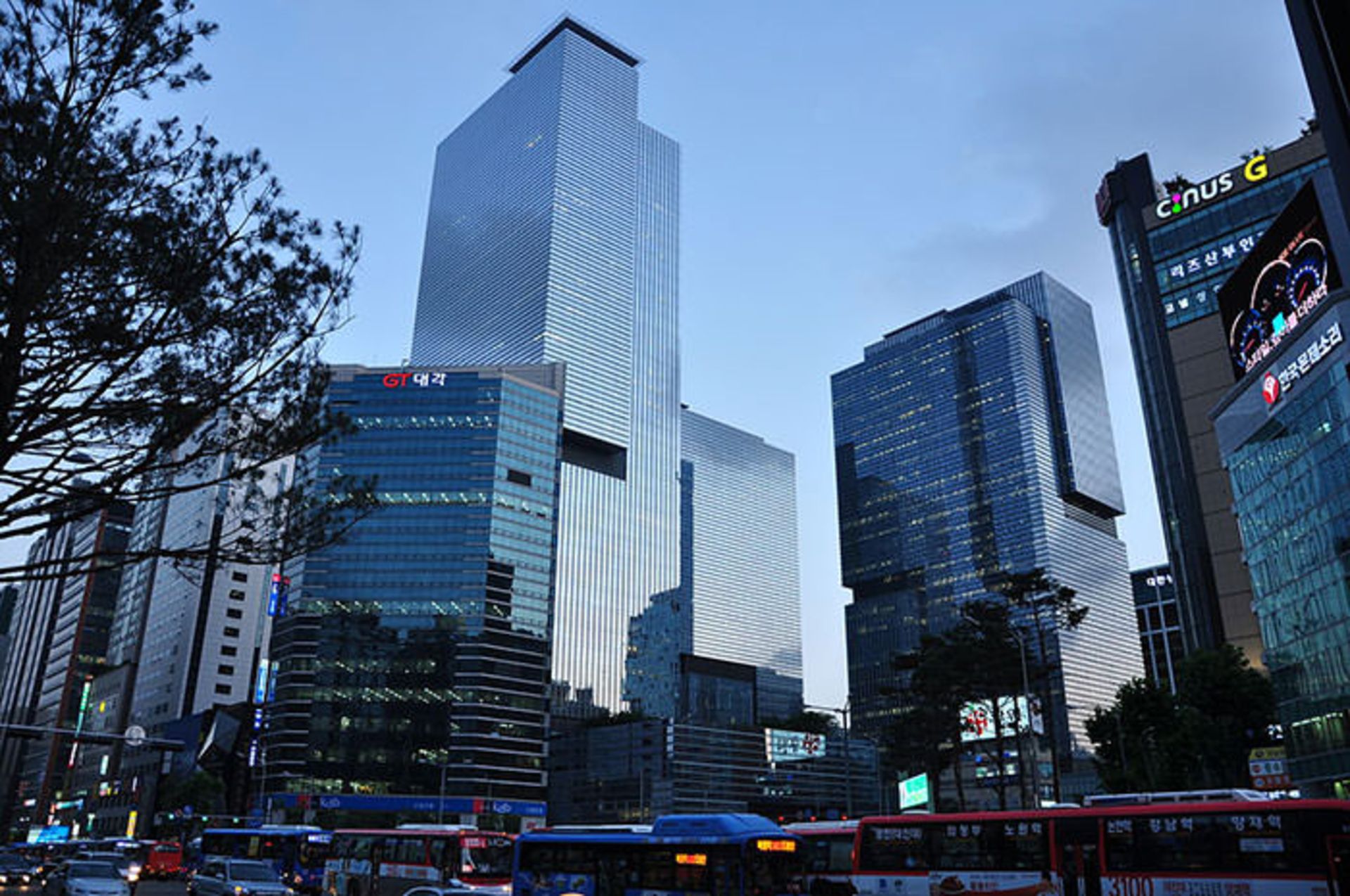 Samsung Town, Samsung’s main management center in Seoul, South Korea
Samsung Town, Samsung’s main management center in Seoul, South Korea
How does an Asian brand from the ashes of war and economic challenges become one of the world’s technology pioneers? Join us to take a look at the story of the Samsung brand, a Korean company based in Seoul that is present today with numerous sub-categories almost everywhere in the world.`
The history of Samsung
Lee Byung-chul (Lee Byung-chul), the founder of Samsung, was born on February 12, 1910 during the time when Korea was occupied by Japan. His father, Lee Chan-woo, was a relatively prosperous landowner who was educated in the yangban class (a special class of military officers and civil servants) in the school of classical Confucianism.
Byung Chul was first introduced to basic Chinese education according to his family tradition and went to Seoul at the age of ten to spend his elementary and high school years in this city. Then he entered Waseda University in Tokyo for higher education, but for unknown reasons, he left his course halfway and returned to Korea. He did nothing for several years until, at the age of 26, he started a rice business with the wealth he inherited from his father.
 Lee Byung-Chul, the founder of Samsung
Lee Byung-Chul, the founder of Samsung
Byung Chul’s first investment experience did not bear fruit, so he moved to Daegu City and started a new business in the field of trading, transportation, and real estate. This multipurpose company also went bankrupt due to the Japanese invasion of Manchuria, but Byung Chul, who had high aspirations, stubbornly continued the entrepreneurial path.
Samsung was founded with a capital of 25 dollars
On March 1, 1938, Binug Chol founded a company called Samsung Sanghoe with a capital of 300,000 Korean won (equivalent to $25; about $558 today) with 40 employees and limited to the sale of dried fish, noodles, and vegetables. At that time, the word Samsung meant three stars; It was a symbol of greatness, abundance, and power.
 The first Samsung logo was in 1938
The first Samsung logo was in 1938
The word Samsung means “three stars” and was a symbol of greatness, abundance and power
By focusing on domestic business, Samsung managed to gain a small market in the Su-ri region. Relying on family business principles as well as focusing on productivity, Lee Byungchul strives to win more customers’ trust by providing quality products. In just one year, his new business became so profitable that he decided to branch out into new areas.
Samsung in the 20th century: from zero to globalization
By the mid-1940s, Samsung had become a prosperous and growing company, and Byung expanded its business to export and import. For a decade, Samsung had a flour factory and confectionery machinery and did all its own production and sales operations without outsourcing. Most of the company’s products were sent to the cities of Manchuria and Beijing.
In 1951, Samsung Moolsan, which is roughly the same as today’s Samsung, was officially established with new divisions such as textiles and insurance. When a major war broke out between the two Koreas, Samsung was known as one of the 10 largest business companies in South Korea. After the North Korean attack on Seoul, Lee fled the city and moved his business operations to Pusan.

The New York Times
At the end of this war, South Korea was heavily involved in the economic crisis; But Lee Byeong-chul saw this situation as a great opportunity to renovate and further develop his company. By helping the government in the reconstruction of the national economy, he managed to establish a good relationship with the high-ranking officials of the country, and in this way, he obtained the necessary financial support and credit for the development of the company.
Korea’s Industrialization Era: Season of Business Opportunities
The economic and social structure of South Korea experienced huge changes in the 1960s and 1970s, because the government, by applying industrial development policies, wanted to direct the country’s economy from an agricultural axis to an industrial axis.
This era, which became known as the “Miracle of the Han River”, was accompanied by rapid economic growth and intense industrialization, and of course, the government also provided comprehensive support to promising entrepreneurs and companies. Samsung was one of the companies that directly benefited from the benefits of these policies.
In 1953, Lee launched Korea’s first sugar refining company, Cheil Sugar, which was criticized by many big businessmen; Because in those years, the sugar needed by the country was easily imported from America. However, Lee justified the government that this action would lead to Korea’s self-sufficiency.
During the industrialization period, the Korean government gave a lot of support to growing companies like Samsung
A year later, he established Cheil Wool Textile Company in the field of wood industry, thanks to the policies that the government had taken to replace imported products. By the end of the 1950s, Samsung controlled several banks and insurance companies.
During this time, Lee Byung-chul imposed strict rules on the company. Unquestioning respect for the company was part of Samsung’s corporate culture, and employees had to work with military discipline.
On the other hand, in the 1960s South Korean leaders were content to accommodate Samsung’s ambitions because the company had become a symbol of how political connections lead to great fortunes.
 Park Chung-hee, the president of Korea between 1963 and 1973
Park Chung-hee, the president of Korea between 1963 and 1973
Some say that Lee Byung-chul was the richest man in South Korea in this decade. When Park Chung-hye came to power in a military coup, he launched a campaign against corruption. Lee was in Japan at the time and initially refused to return to South Korea; Because he knew that as the richest man in South Korea, he would be the main target of Park’s campaign.
Sometime later, he returned to Seoul and signed an agreement with Park, according to which Samsung was allowed to continue its business activities; But on the other hand, the company had to implement the development projects of the park. During this period, the Korean economy had a more socialist atmosphere, but he accepted any agreement to preserve the business that was to become his empire.
In the 1960s, Lee Byung Chul was accused of illegally selling goods worth $50,000
During this period, Samsung had an active presence in many diverse fields; But it also had to face challenges. For example, in the late 60s, Lee was accused of illegally selling goods worth $50,000. However, it was later revealed that these false accusations were made by a disgruntled government official whom Lee had refused to pay.
However, in this case, one of Byeongchul’s sons was imprisoned and the father paid a high price to the government for his release; But Samsung, under Lee’s leadership and unceasing efforts, reached an annual revenue of 100 million dollars by the end of this decade.
The Samsung founder’s next idea was his biggest undertaking to date: founding Samsung Electronics.
Tolo Samsung Electronics
Shortly after his son’s arrest, Lee decided to enter the mass communications industry by setting up a radio and television station, as well as manufacturing televisions and electronic components. At that time, these markets were dominated by several American and European manufacturers, and the Japanese had begun efforts to advance in this field.
 The first construction area of Samsung Electronics factories
The first construction area of Samsung Electronics factories
Samsung Electronics Division was launched on January 13, 1969, with the presence of Lee Byung-chul and 6 other directors and investors as a new subsidiary of the parent company. Lee immediately hired 137 apprentices and in 1970 sent them to Sanyo Electric and NEC for training. This was the first series of overseas training of Samsung employees in the company’s history.
Samsung Electronics sent 137 trainees to Japan for training
In the first stage, in response to the growing needs of people, Samsung invested heavily in the development and manufacture of home televisions, and in November 1970, the company’s first 12-inch black-and-white television entered the market. This product was so well received that within two months, the company started exporting it to Latin American countries.
Mass production of electrical appliances
In November 1970, Samsung Electronics was registered as an independent company to develop new products. Until two years later, this company had two production lines of black and white televisions, which supplied a total of 480,000 television sets per year to domestic and foreign customers.
 Samsung’s first black and white TV
Samsung’s first black and white TV
In this decade, televisions were still one of the advanced technologies that only a few people in developing countries could afford. This provided a good opportunity for Samsung to take a large share of the domestic market by developing cheaper products than competitors.
In 1973, Samsung produced its first black-and-white transistor television called the Maha 506, which became an enthusiastic success in South Korea; Especially because the model and technology of this product was not copied from foreign models and was only Samsung’s own.
Variety of household products
In the 1970s, Samsung decided to enter foreign markets and quickly expanded its products to include refrigerators, washing machines, and microwaves. One of the main challenges of this period was the competition with Japanese companies such as Sony and Panasonic, which dominated the electronics industry at that time.
In 1974, Samsung opened the first series of frost-free refrigerators and air conditioners, and sometime later added 8-channel stereos to its products. AM/FM recording cassettes were Samsung’s next product, which were produced for export to America in addition to domestic markets.
In addition, while the trends of social life were changing, the company managers guessed that the rate of families who would like to buy a washing machine would increase soon. Therefore, in December 1974, the production of washing machines with a capacity of 2 kg began.
To better understand the variety and rapid expansion of Samsung products, we mention that this year, kitchen fans, electric ovens, electric rice cookers, electric calculators, and several other similar products were also put into the production line. The interesting thing is that Samsung was able to improve its technologies in the home appliance sector with the help of the Japanese company Sanyo Electric.
 Refrigerator freezer manufactured by Samsung in 1976
Refrigerator freezer manufactured by Samsung in 1976
Until 1975, Samsung managed to optimize the technology of its televisions in such a way that they consume less energy. With this approach, the company’s share of the Korean market reached 40.9%. Also, the production of highly efficient refrigerators and freezers with long life and low electricity consumption made these products take the first place in the domestic market of Korea.
Samsung produced one million black and white TV sets in 6 years
October 20, 1976, was recorded as a key day in the company’s history, as Samsung had produced one million black and white television sets by this time. Two years later, with the opening of Samsung Electrics America (SEA), global awareness of the Samsung brand doubled.
Research and development
One of the principles that Lee Byung-chul always prioritized and continued in his legacy was the emphasis on continuous learning and continuous improvement of the company’s products.
In April 1980, Samsung opened the Suwon R&D Center. The research carried out in this center over time has helped the company to become one of the most advanced in the field of electronic industries, semiconductors, polymer chemicals, genetic engineering, optical communications, air and space, and various technological innovations, including nanotechnology and advanced network architecture. become world companies.
 Samsung Suwon R&D Center 1980
Samsung Suwon R&D Center 1980
But let’s go back to the 70s. During this period, Samsung invested a lot in the research and development of the semiconductor industry. Samsung Semiconductors, which operated independently, was still unable to provide high-quality semiconductors to Samsung Electronics, and the company had to import components from other companies.
 Samsung chips in 1980
Samsung chips in 1980
But in a difficult period, most of the semiconductor manufacturing companies stopped the public offering of their products. At this point, Samsung Electronics decided to buy the Samsung Semiconductors division and integrate it with its manufacturing plants.
First Global Partnerships
Samsung Electronics executives knew that in addition to a continuous flow of education and research, they needed strong partnerships to go global. In the early 1980s, Samsung had more than 2,000 technology and business partners, which it grouped together to better interact with them and provide better training opportunities for all of its employees.
In 1982, Samsung opened its first overseas production branch in Portugal. In this way, Samsung became the first Korean company to expand its production line outside the borders as a completely independent branch. In 1988, Samsung established other subsidiaries in the United States, United Kingdom, and Mexico.
The first independent production branch of Samsung was established in Portugal
But Portugal’s choice was made for special reasons: in 1982, this country had the lowest amount of television distribution among European countries, and at the same time, it had a low-cost and enthusiastic workforce.
In line with the development of global partnerships, Samsung Electronics signed a cooperation agreement with EMACET, one of the top three color TV assembly companies in the world, and MRI, a British home appliance sales company. This cooperation became the background for the production of 1.5 million color televisions in the Portuguese production line, which were later exported to the Netherlands, Denmark, England, and Germany.
Entering the field of semiconductors and computers
1983 is considered a very important year in the history of Samsung in two ways. First, after years of research and development, Samsung finally produced its first DRAM memory chip this year; A success that was the first step towards becoming one of the players in the field of semiconductors.
The second market in which Samsung was present was the production of personal computers and their accessories. Samsung’s first computer named Samsung SPC-1000 was launched in the domestic market of Korea and although it did not become a global success, it was the foundation of the company’s subsequent and effective efforts. As of 1987, Samsung’s SPC-6000 c2-bit computer sold 205,000 copies in one year.
 The first Samsung SPC-1000 computer
The first Samsung SPC-1000 computer
Just 3 months after the successful development of 64K DRAM, Samsung introduced its first 256K DRAM, far ahead of the competition. At that time, only a few limited companies such as Intel, Fujitsu, and NEC were producing similar chips.
In addition to chips and personal computers, the program for the production of computer monitors, printers and other accessories has also been implemented. Thanks to the reasonable price and good quality, these products quickly found their place in the domestic and foreign markets.
Samsung Semiconductor became the official sponsor of the 1988 Seoul Olympics
Following the company’s remarkable progress, Samsung Semiconductor was selected as an official sponsor of the 1986 Asian Games and the 1988 Seoul Olympic Games. Samsung spent more than 3 million won to install communication equipment in 22 different stadiums, but in return, it succeeded in promoting its brand and technologies on the world stage.
At the same time, another event also made Samsung, as a relatively new company in the field of electronic products, become the headlines of the world media: after the mass production of DRAM with a capacity of 256 KB, Samsung started a project in collaboration with LG, Hyundai Electronics and ETRI. started to develop DRAMs with a capacity of 4 megabits; A project that brought Korea to first place in the semiconductor market.
The cooperation of Samsung, LG, Hyundai Electronics, and ETRI brought Korea to first place in the semiconductor market.
Also, for the first time, Samsung won the best innovation award at the Korea Technology Exhibition by making the lightest and smallest video recording tape with a size of 4 mm, and Nomura Research Institute also introduced this company as one of the most reliable home appliance manufacturers around the world.
Popularity and increased sales
In the 1980s and 1990s, Samsung Electronics became more popular in Asian communities in the development of electronic home appliances by offering products that exceeded consumer expectations. For example, this company released its first microwave in 1984 with high quality and reasonable price, which quickly found many applicants and sold well even in global markets.
On the other hand, Samsung was able to become one of the popular brands in this field by using new technologies in designing and manufacturing refrigerators. The company’s first series of side-by-side refrigerators were also produced in this decade and were noted for their high efficiency and modern design.
In the meantime, we should not neglect the first Samsung color TV, which achieved stunning sales with good image quality in just one year.
In the 1990s, Samsung continued to produce larger and higher-resolution TVs and gradually became a pioneer in the advanced TV market.
Asian Financial Crisis: Samsung’s Challenges and Measures
In order to improve its position in the global markets, Samsung was facing fierce competition with big technology companies, but it faced another big challenge: the financial crisis of 1997, which affected many companies in East Asia, due to a sharp decrease in demand, problems Liquidity and extreme currency fluctuations resulted.
Samsung was also not spared from the consequences of this crisis. The company’s CEO and chairman at the time, Lee Kun-hee, had to rethink his micro and macro strategies. According to him, what could save the company in this situation was reducing costs and increasing productivity. Thus, Samsung closed down or sold some of its loss-making units and focused on its most profitable divisions.
Lee also changed the management structure of the company during this period and made it simpler and more focused. These changes allowed the company to react to market signals faster and take full advantage of upcoming opportunities.
In addition, Samsung tried to reduce the risks associated with regional economic fluctuations by reducing its dependence on Asian markets and expanding its activities in global markets.
Producing the first mobile phone: Disruptive decisions
One of the decisive decisions of Samsung in the 1990s was to enter the world of mobile phones. In 1993, when the company’s first phone named SH-100 was introduced, few thought that this company would not only continue its path but would one day dominate most of the world market; Because the performance of this phone was so weak and problematic that the CEO of the company personally went to the factory and ordered to destroy all the stock of this department.
Samsung’s first mobile phone was very weak and inefficient
After that, Lee Kun Hee traveled to different countries to check the status of his company in other parts of the world. Lee’s observations were far from his ideas and vision, so he held a meeting with the company’s top executives in Frankfurt and famously said, “Change everything, except your wife and children.”
 The first Samsung mobile phone SH-100
The first Samsung mobile phone SH-100
This incident became known as Samsung’s cultural revolution and completely changed the course of Samsung’s activities. Lee wanted to transform his company from a second-rate manufacturer of color televisions into the largest and most powerful electronics manufacturer in the world.
This idea seemed very bold: under Lee’s order, the company had to stop mass-producing products that did not have the highest quality among competitors and focus on the “tops” even at the cost of losing sales volume.
Samsung CEO Lee Kun-hee changed the entire structure and policies of the company
Until 1999, the company launched more advanced phones that used new features such as text messaging and mobile games and gradually took a small share of the market.
Perhaps the most important distinguishing feature of Samsung phones in this era is their user-friendly design, but these steps were the background of one of the company’s greatest future successes: smartphones.
Development of digital technologies and flat TVs
Following the changes made by Lee Kun-hee in the company’s business plan, the company moved towards the production of digital products by tracking customer consumption patterns. Lee’s foresight led Samsung to establish its position in this emerging market by producing products such as digital cameras, DVD players, and digital audio and video equipment.
One year after the production of the first flat-screen TV by Fujitsu (1997), Samsung also introduced a similar product to the market. The public reception of this TV was a kind of motivation to start the new season of Samsung screens.
Samsung in the 21st century: climbing to the top of technology
In 2001, Samsung registered the position of the most valuable company in South Korea, which was previously owned by Hyundai. Thanks to the company’s aggressive marketing campaigns, the brand name was seen almost everywhere in the country, from hospitals and digital billboards to organizations, schools, and even the country’s seaports.
At this time, Samsung was the second largest chip manufacturer in the world, and sales of semiconductors accounted for about $6 billion of the company’s $33 billion revenue.
But the fact was that in the first decade of the 21st century, Samsung considered Sony as its most important competitor. Specifically, in 2002, Samsung Electronics accounted for 14.5% of the country’s total exports and was the world’s third most profitable electronics company after General Electric and Microsoft. Sony had more sales than Samsung, but it was less profitable.
At the beginning of the 21st century, Samsung considered Sony as its most important competitor
Samsung took the biggest step in the way of naming its brand by sponsoring the 2002 World Cup in Korea and Japan. In an interview with the New York Times, the spokesperson of the company said: “We will have an active presence in the production of any type of electrical product, from chips to mobile phones.” And in the last 24 years, the people of the world have experienced the concrete manifestation of this.
At this time, Samsung employed 88,000 employees in 89 offices in 43 countries and the company’s activities were divided into 5 main units: digital appliances, media, LCD, semiconductors, and telecommunication networks.
Smart TVs and advanced displays
In the first decade of the 21st century, Samsung was continuously developing and improving the technologies related to TV devices, and the production of LCD and LED screens was considered a brilliant achievement of these efforts.
Samsung introduced and released its first LCD TV in 2006, and six years later, it surprised its fans with the unveiling of smart TVs. These TVs brought users a new experience of watching TV with features such as audio and video control.
Between 2010 and 2015, Samsung introduced innovative technologies that included LED TVs and then Smart TVs. Smart TVs allow users to connect to the Internet and watch online content and allowed them to install various software programs on the device.
Smart TVs allow users to connect to the Internet and watch online content
In the middle of the second decade of the 21st century, Samsung once again showed a new manifestation of its skill. The introduction of 4K UHD (Ultra High Definition) TVs followed by QLED TVs in 2017 marked a triumph for the brand. With more brightness, more vivid colors, better contrast, and stunning details, these TVs have taken the user experience to a new level.
 Samsung Neo QLED TV model QN800D
Samsung Neo QLED TV model QN800D
Samsung’s journey in this segment continued with the introduction of Neo QLED TVs and foldable screens. By adding a layer of small LEDs known as Mini-LED, Neo QLED technology provided unprecedented contrast and brightness.
Also, one of the most innovative products of Samsung, which was launched with the aim of improving communication and user comfort, was televisions with artificial intelligence capabilities and integrated with the Bixby voice assistant, which provided users with a more interactive and personalized experience.
Advances in semiconductors: memories and processors
Samsung’s smart investment in semiconductors over the past 20 years has resulted in products that are used in many electronic devices such as smartphones, computers, and servers.
In 2002, Samsung became the driving force of the flash memory market by introducing the first 1GB NAND chip. Only three years later, by introducing DRAM and NAND chips with 90 nm technology, this company was able to reduce energy consumption and bring better performance to various devices.
However the rise to 20 nm technology resulted in Samsung’s strategic cooperation with IBM. Also, with the efforts of Jung Kyung Ho, the executive director of Samsung, the introduction of one of the other great innovations of this company, 3D V-NAND technology, made news in 2013.
With the start of mass production of the first EUV DRAM memory, the company ushered in a new era of miniaturization, as the use of ultraviolet light to etch patterns on the chips enabled the creation of extremely small and precise circuits.
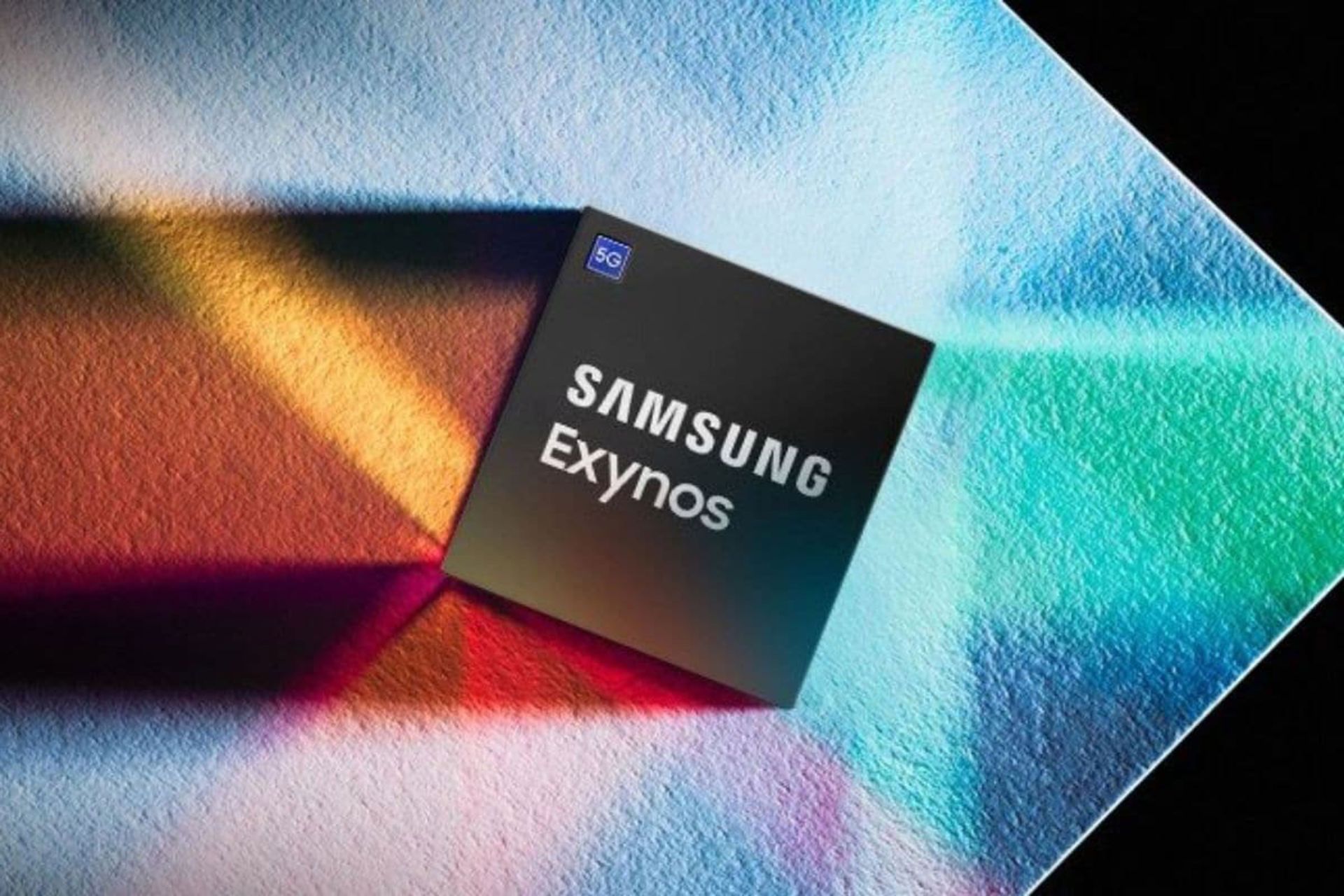
Samsung, which had focused on mobile processors since the early 2010s, started a new chapter in its chip-making history in 2011 by introducing the first series of Exynos processors. These processors, which were first used in some of the company’s phones, were upgraded over the following years with more advanced features such as support for artificial intelligence and 5G.
The importance of the chip market for Samsung executives took on another color in 2021 when the company announced that it would invest more than $170 billion in semiconductors by 2030.
The unveiling of the world’s first HBM-PIM memory was another milestone in the history of Samsung semiconductors. The technology combined processing and storage into a single chip, doubling the processing speed of artificial intelligence, which is critical for applications such as voice recognition, image processing, and even self-driving cars.
Smartphones
Smartphones form the most important experience of people’s digital life today, and it is not without reason that Samsung always monitors the smallest signals in this market.
 Omnia i900
Omnia i900
In 2008, Samsung introduced its first smartphone named Omnia i900. This Windows-based phone, with a touch screen, 3G connectivity, and a 5-megapixel camera, was a moderate success, but Samsung knew it had to go in a completely new direction to compete with Apple’s revolutionary iPhone, which hit the market in 2007.
The Omnia i900 was Samsung’s first Windows-based smartphone
Thus, Samsung launched its first Android phone, the Galaxy i7500. This device with a 3.2-inch touch screen, a 5-megapixel camera, and Wi-Fi connectivity; First of all, it was supposed to establish Samsung’s commitment to Android. For this reason, many people consider Samsung’s first truly smartphone to be the Galaxy S, which was introduced in 2010 and paved the way for subsequent Galaxy phones.
With its Super AMOLED display and a stronger and faster processor than the previous generation (ARM Hummingbird), Galaxy S became one of the first phones in the world that had real competition with Apple. After that, the Galaxy S2 entered the market with a 4.3-inch Supermold Plus screen, a dual-core processor, and a much thinner design than the previous generation.
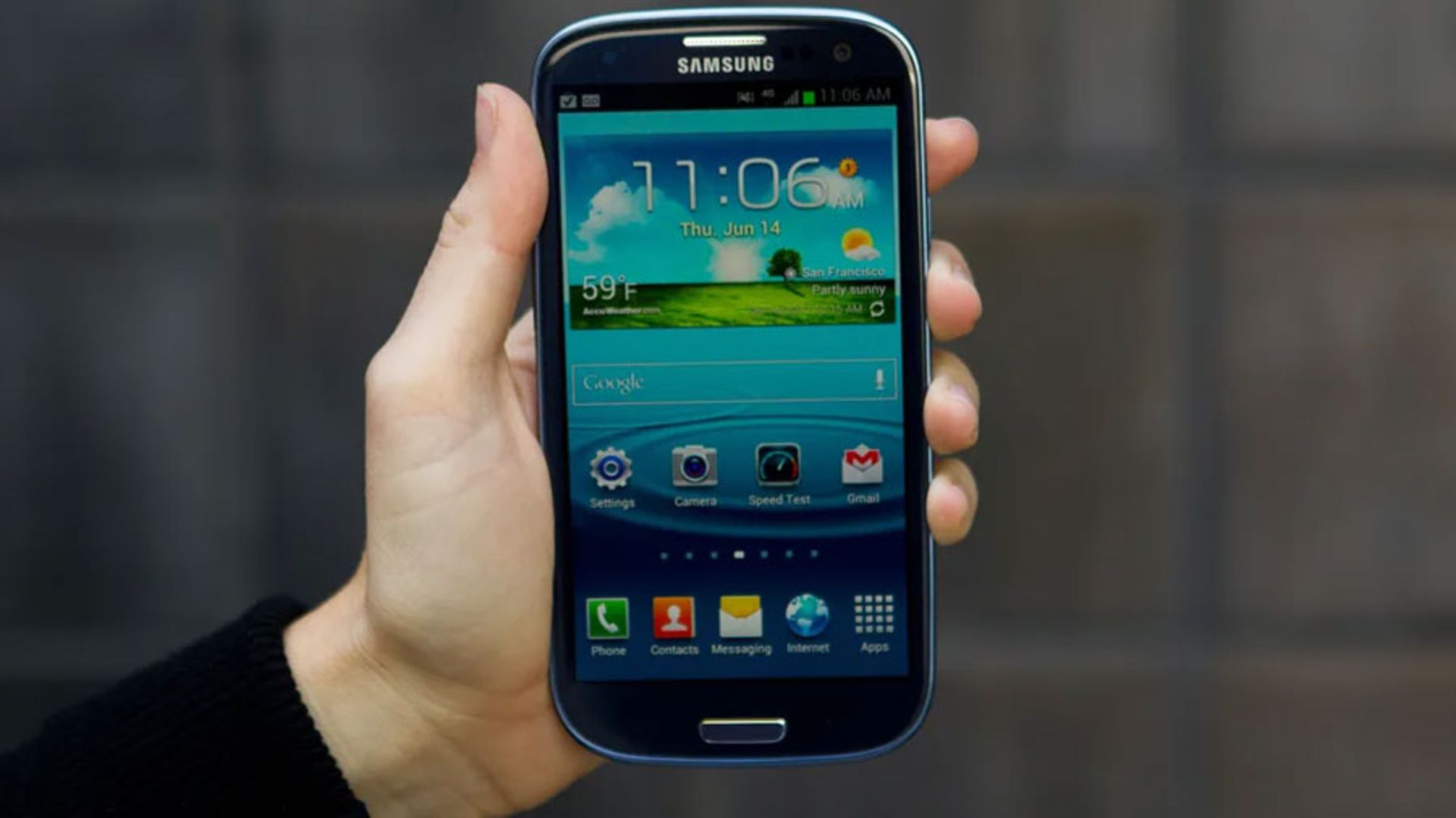 Galaxy S3
Galaxy S3
The Galaxy S3 became one of the best-selling phones in the world in 2012. The 4.8-inch Supermould HD screen and ergonomic design can be seen as the notable features of this product. In addition, new software features such as S Voice and Smart Stay were also added to this device.
In the same way, the design, hardware, and software capabilities of the Galaxy S4 and 5 were also improved, and in 2015, the Galaxy S6 series was introduced in two models, the S6 Standard and the S6 Edge, with the Edge model creating a new evolution in smartphone design with a curved display.
In 2012, the Galaxy S3 became one of the best-selling phones in the world
In 2016, Samsung introduced the Galaxy S7 and S7 Edge with improved cameras, water resistance, and longer battery life. These phones were equipped with a 12-pixel camera with Dual Pixel technology for better performance in low light.
The next series of Samsung phones, the Galaxy S8 and S8 Plus were presented in 2017 with an infinity display, reduced bezels, and an 18:5:9 aspect ratio, and then it was the turn of the Galaxy S9 series, with variable aperture and stereo speakers. Improve the quality of the camera and sound compared to the previous generation.
 Galaxy S10
Galaxy S10
The Galaxy S10 was the first Samsung phone to come with a triple camera and had a new design, especially in the placement of selfie cameras. With an ultrasonic fingerprint sensor and new features such as reverse wireless charging, these phones brought a noticeable improvement to Samsung’s smartphones.
In 2020, the new series of smartphones named Galaxy S20 and S20 Ultra started the 5G season and provided users with a new experience of 108-megapixel camera and 100x zoom.
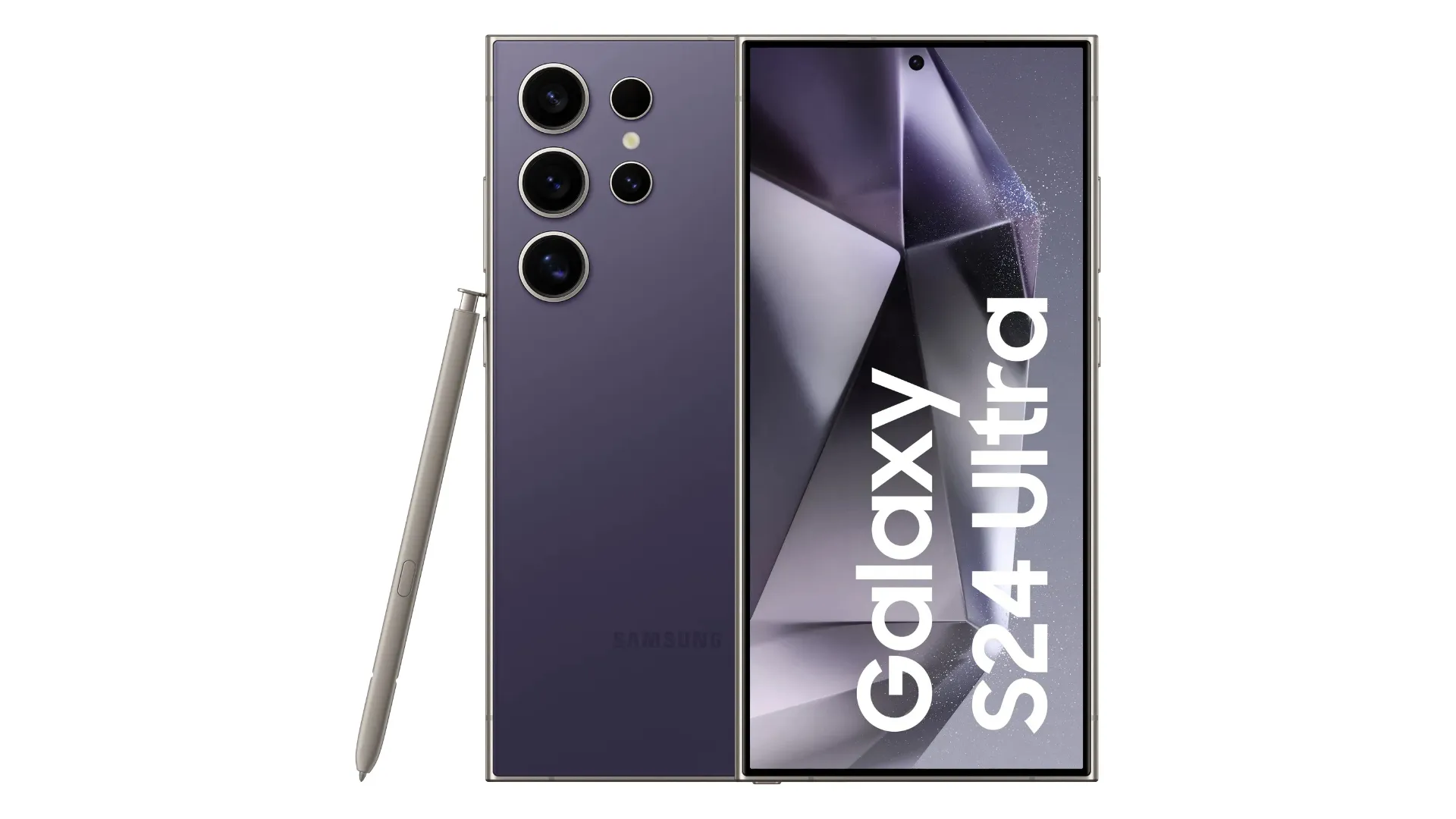
But in the Galaxy S21 series, the Ultra model with its quad camera of 108 pixels, powerful zoom, and modern design, was recognized as one of the leading smartphones in the world. This trend continued in the Galaxy S23 Ultra and Galaxy S24 Ultra phones and registered the name of Samsung’s flagships as competitors of Apple (Pro Max series).
Galaxy Note and foldable phones
Samsung introduced the phablet concept to the market with the release of the first Galaxy Note phone. This phone (and the rest of Samsung’s Note series) was equipped with an S Pen, which allowed users to draw and take notes or enjoy working with special software features. Over the following years, Note phones from the S-series family were introduced, until the big challenger was the Galaxy Note 7.
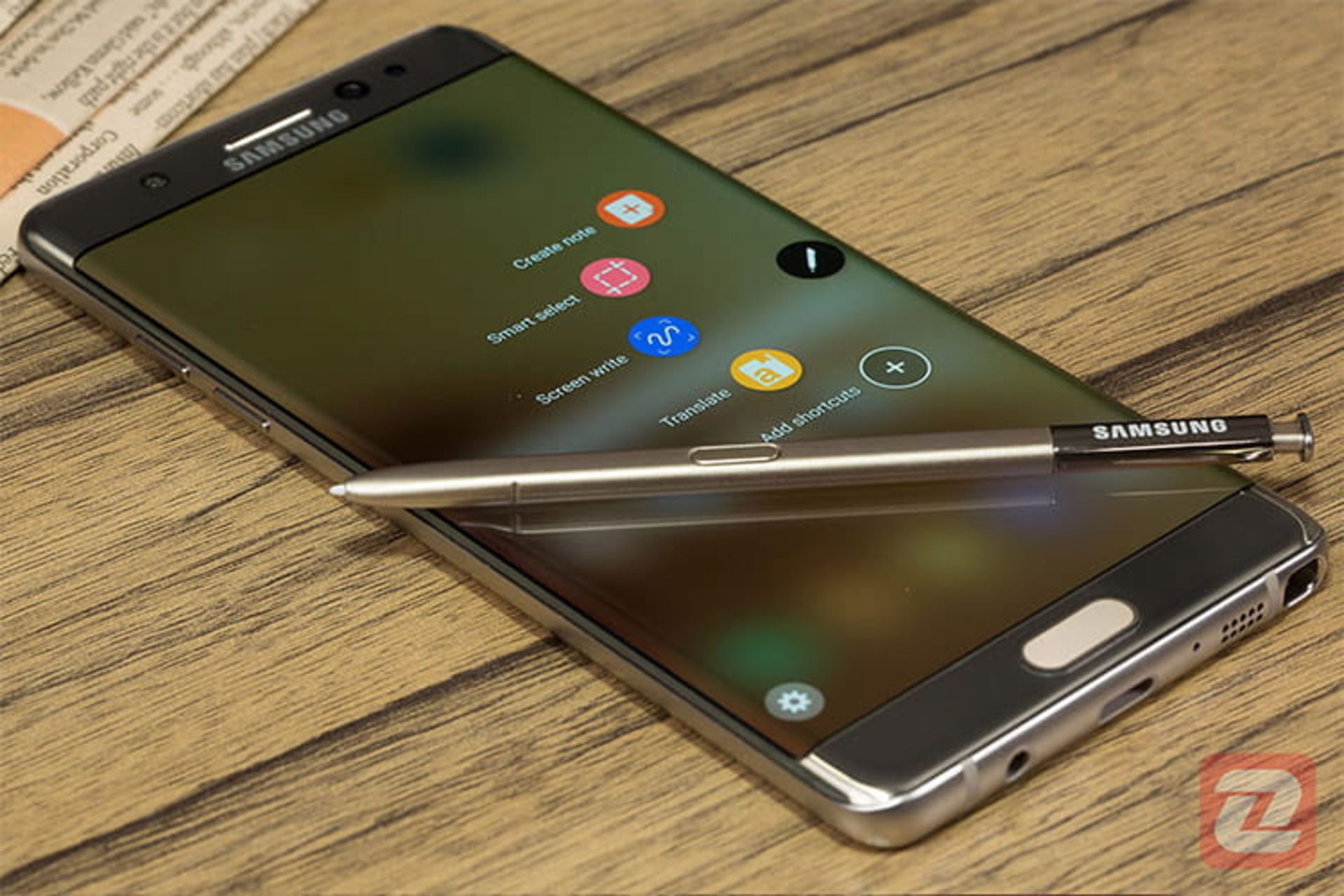 Galaxy Note 7
Galaxy Note 7
The Galaxy Note 7 became a real challenge for Samsung due to battery fires and explosions, to the point where the company decided to stop production and recall the sold phones.
The burning of Galaxy Note 7 batteries involved Samsung in a major crisis
The production of Galaxy Notes ended with the Note 20, and finally, in 2021, Samsung decided to merge the two popular Galaxy S and Note families together. Thus, the S Ultra series became the true heir of the Note by adopting the S Pen.
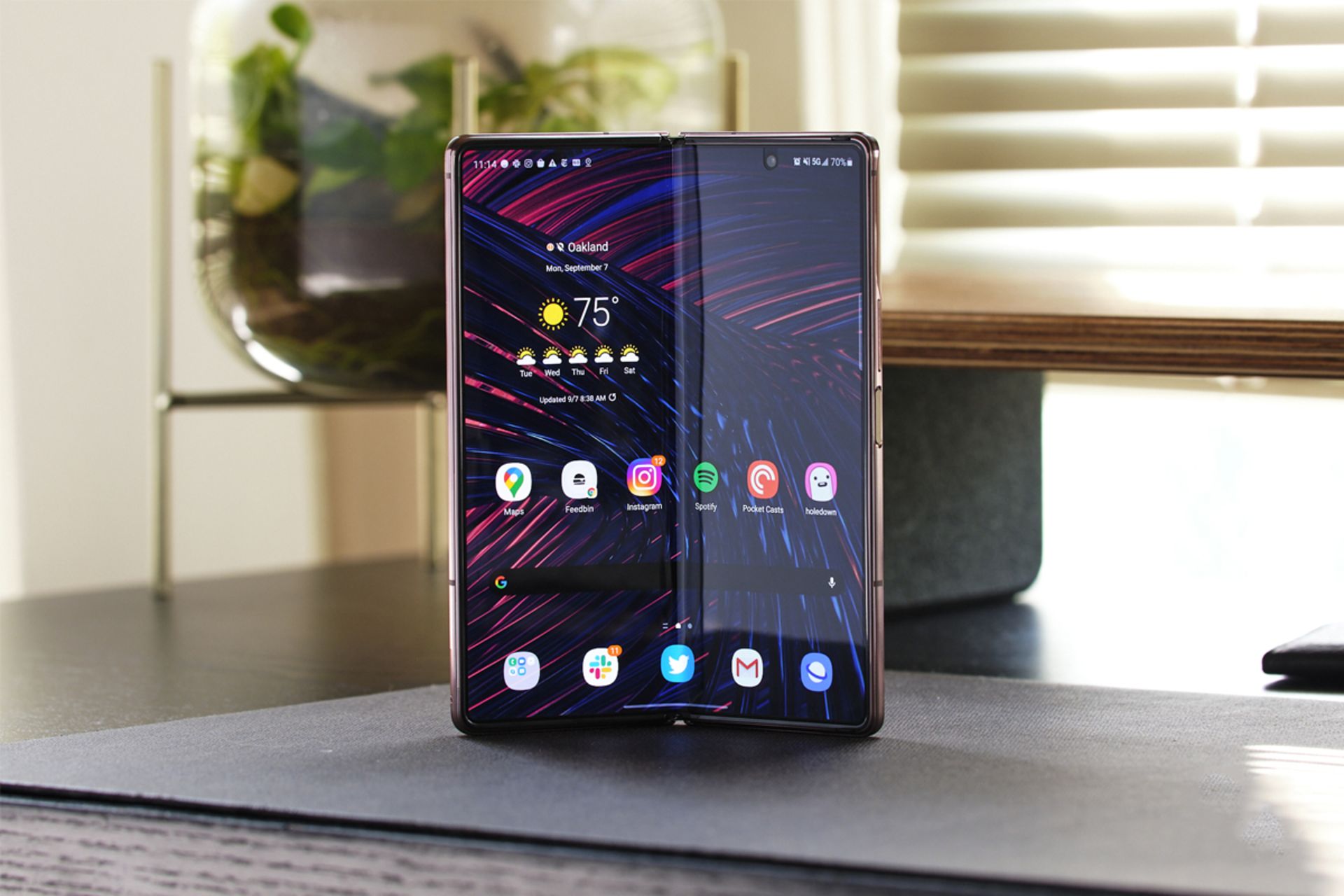 Galaxy Z Fold 2
Galaxy Z Fold 2
In the foldable phone segment, Samsung excited not only its fans but also the smartphone industry by introducing the Galaxy Z Fold in 2019. This phone was Samsung’s first commercial product that used a flexible screen and had the ability to transform into a small tablet.
Naturally, Samsung’s first foldable phone had its flaws (such as the vulnerability of the foldable screen and the hinge problem), but the company tried to satisfy its fans by taking a little break and improving the subsequent versions.
The first Galaxy Z Flip phone of 2020 was released and with its vertical folding design and smaller size, it offered a different experience from folding phones. In this way, the Z series phones also became permanent members of the Galaxy family.
But Samsung’s best-selling phones are not the flagships of the S series, but the mid-range phones that come under the Galaxy A, M, and F series. It is not bad to mention the tablets of this company, which are sold under the name Galaxy Tab in four groups: flagship tablets (S series), mid-range (A series), economic (E series) and durable tablets (Active series).
Smartwatches
Samsung’s presence in the smartwatch market began in 2013 with the introduction of the Galaxy Gear, although the Galaxy Gear still looked like a raw product despite its 1.63-inch screen, 1.9-megapixel camera, and Exynos processor.
A year later, three more members of the Galaxy Gear family arrived: the Gear 2 with an improved camera and a more powerful processor, the Gear 2 Neo with a lighter design, and the Gear Fit with a curved display for fitness enthusiasts, targeting different user groups.
The introduction of the Galaxy Gear 3 with a 2-inch curved screen and the ability to install a SIM card was more popular because now users could make calls and send messages without the need for a mobile phone.
Galaxy Watch 4 revolutionized the smartwatch market with Wear OS
The production of the next products of the Galaxy Gear series continued until 2017, but in 2018, Samsung changed the game with the release of its new generation of smartwatches called the Galaxy Watch.
The first Galaxy Watch, with its Supermold display, long battery life, and a variety of health assessment features, showed Samsung’s readiness to gain more market share.
 Galaxy Watch Ultra, Galaxy Watch and Galaxy Buds 3
Galaxy Watch Ultra, Galaxy Watch and Galaxy Buds 3
In 2021, Samsung created another storm in the smartwatch market by introducing the Galaxy Watch 4 series. These watches opened a world of new possibilities to users by using the Wear OS operating system that was developed in cooperation with Google.
Finally, in 2024, Galaxy Watch 7 and Galaxy Watch 7 Ultra were released with a 3nm chip, faster and smoother performance than ever, and the latest sports and health features, so Samsung remains Apple’s most important competitor in this field.
Modern products for smart homes
Samsung’s electronic products are not limited to displays, phones, and smartwatches. In fact, the products of this company are so diverse that they can be called a comprehensive technology ecosystem.
From laptops and Bluetooth headphones to refrigerators and vacuum cleaners and air conditioners and various other household appliances, or at different levels of network equipment, medical systems, and solar panels, Samsung is walking in the same direction that its founder Lee Byung-chul envisioned: absorption. More and more customers and conquer new markets.
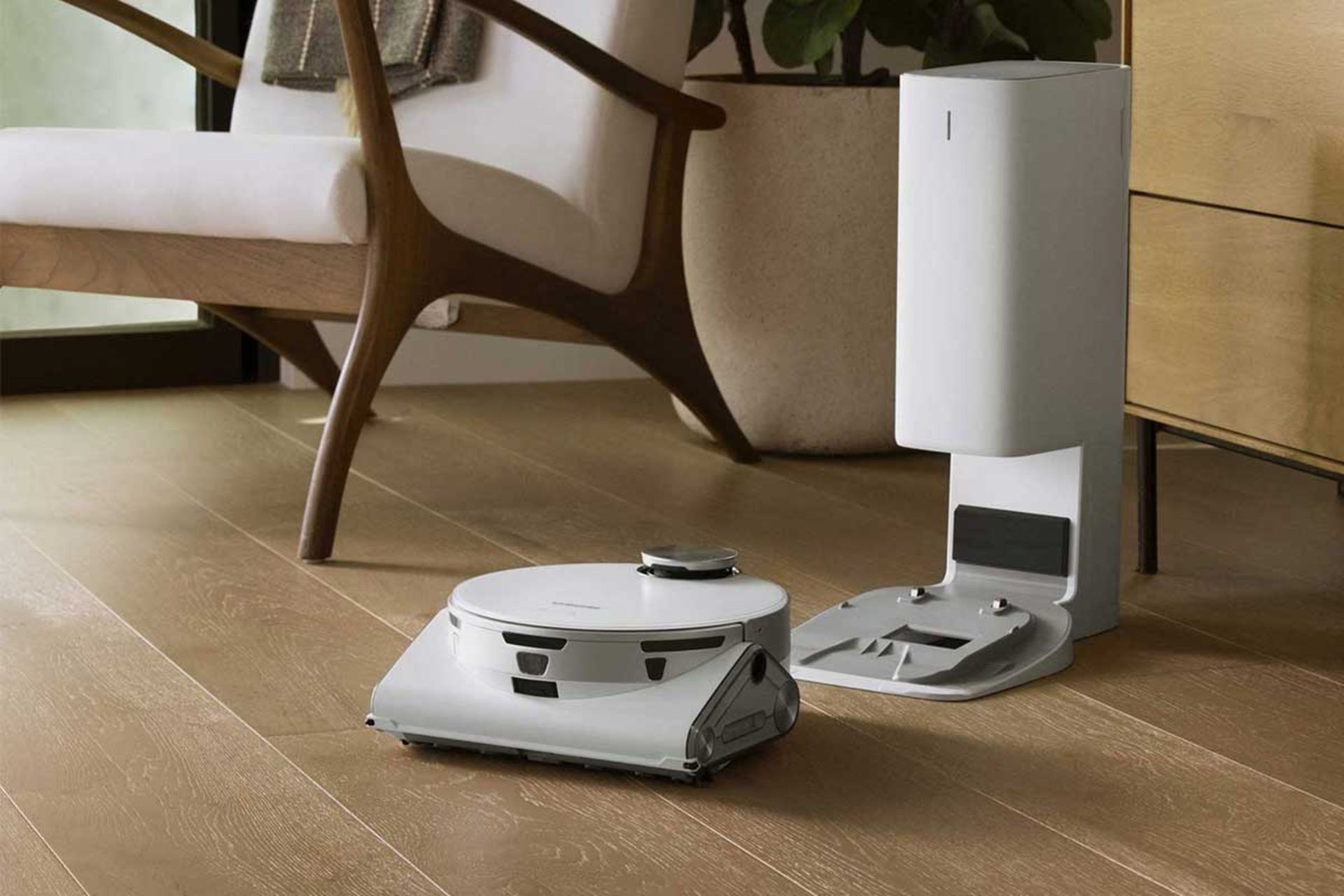 Jet Bot AI Plus; Robotic vacuum cleaner + Jet Bot AI
Jet Bot AI Plus; Robotic vacuum cleaner + Jet Bot AI
Take Bespoke Smart Refrigerators for example. These products have advanced the idea of modern kitchens to another level with the ability to customize, large touch screens, and advanced artificial intelligence for food management. Or Bespoke AI washing machines that learn user consumption patterns and optimize washing programs.
Also, the robotic vacuum cleaners of the Jet Bot AI+ series, using lidar sensors and artificial intelligence, are able to identify and avoid obstacles in their path and clean the house fully automatically.
Subsidiaries of Samsung
As a multinational company, Samsung covers other sub-categories besides Samsung Electronics. Each of these companies operates independently in their specialized markets and some of them have become important industry players over time:
Samsung Life Insurance
- Date of establishment: 1957
- Field of activity: insurance services
Samsung Life Insurance is known as one of the largest insurance companies in South Korea, which has attracted many customers by offering innovative plans and extensive services.
For example, the plans of this company in the field of retirement and long-term investment play an important role in the development of this country’s economy, so the company’s IPO in 2010 set the record for the largest initial public offering event in the history of Korea.
Samsung C&T
- Date of establishment: 1938 (the first subsidiary of Samsung)
- Field of activity: trade, engineering, and construction
Samsung C&T was launched as a trading company; But over time, it changed its direction and gained world fame by implementing large construction projects. One of the most important projects of this company was the construction of Burj Khalifa in Dubai, which was opened in 2010 as the tallest structure in the world.
The company also operates in the field of energy infrastructure and environmental engineering projects, as during the last two decades, Samsung C&D was one of the active partners in solar and wind power plant development projects, which are part of Samsung’s strategy to deal with climate change.
Samsung SDS
- Date of establishment: 1985
- Field of activity: information and communication technology
Samsung SDS operates as the IT arm of the Samsung Group, providing services in the fields of artificial intelligence, cyber security, blockchain, and digital solutions. One of the most important projects of this company was the development of an innovative cybersecurity platform for South Korea’s critical infrastructure, which played an important role in increasing the security of Korea’s sensitive national data.
The company also developed platforms for blockchain-based supply chain management, which are used by large companies around the world to optimize logistics processes and reduce costs.
Samsung Heavy Industries
- Date of establishment: 1974
- Field of activity: heavy industries and shipbuilding
Samsung Heavy Industries is one of the largest and oldest shipbuilding companies in the world, which has heavy and brilliant projects in the field of construction of cargo ships, oil tankers, and drilling ships. This company became one of the main players in the global shipbuilding industry in the 1990s by building the first giant oil tankers and cargo ships.
One of the largest offshore projects of this company was the construction of an oil drilling platform in the North Sea, which was completed in 2010. Among the other activities of this company, we can mention the construction of marine energy systems, the design and production of wind energy platforms, and the improvement of the safety and productivity of the marine transportation industry by using smart navigation systems.
 Samsung Biologicals Laboratory
Samsung Biologicals Laboratory
Samsung Biologics
- Date of establishment: 2011
- Field of activity: biotechnology and drug production
Samsung Biologics, which is considered a relatively new company, has become one of the largest providers of contract manufacturing services for biologics by building large drug manufacturing plants in South Korea. This company, in cooperation with world-renowned pharmaceutical organizations and laboratories, produces drugs for the treatment of certain diseases, including cancer and immune disorders.
Read more: Samsung’s new artificial intelligence design tools
Samsung Biologics played a key role in the mass production of vaccines for reputable companies, especially during the Covid-19 pandemic. This company is also developing new methods of drug production using advanced biotech technologies, which, if successful, will have a significant impact on reducing production costs and increasing the efficiency of biological drugs.
Samsung Venture Investment
- Date of establishment: 1999
- Field of activity: investment and development of new businesses
As Samsung’s investment arm, Venture Investment invests in startups and emerging companies with high growth potential.
This company, especially in the fields of artificial intelligence, Internet of Things, biotechnology technologies, and renewable energy; By comprehensively supporting innovative ideas, it seeks to discover and develop solutions that will influence the formation of the future digital world.
The path of Samsung’s evolution over the past 86 years shows the power of adaptability and quick adaptation to market changes. By investing in research and development, focusing on innovation, and prioritizing customer needs, this company not only became one of the most important players in the technology field but also defined new standards for future generations of technology in many areas.


What is the difference between CPU and GPU?


Maybe the Earth is not doomed by the death of the sun


A look at the structure of the eye and the mechanism of vision


MSI Prestige 16 AI review; A laptop that does not run out of charge


Migraine: symptoms, prevention and treatment


The new version of Copilot was unveiled; Microsoft artificial intelligence


How to solve the problem of slow charging of the Android phone?


Why does Everest get higher every year?


Everything about Cybercube and Robo Van; Elon Musk’s robotic taxis


The wonderful world of ultrasound
Popular
-

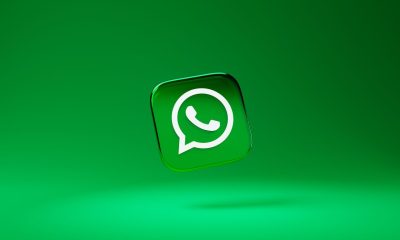

 Technology1 year ago
Technology1 year agoWho has checked our Whatsapp profile viewed my Whatsapp August 2023
-

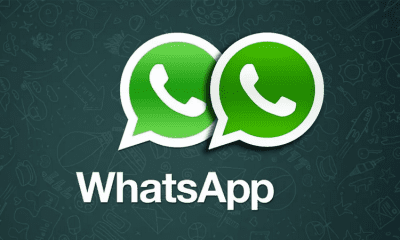

 Technology1 year ago
Technology1 year agoSecond WhatsApp , how to install and download dual WhatsApp August 2023
-



 AI2 years ago
AI2 years agoUber replaces human drivers with robots
-

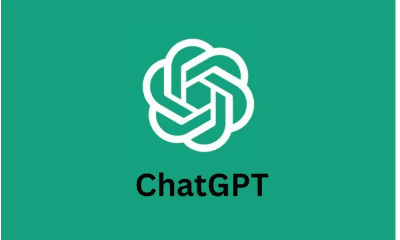

 Technology1 year ago
Technology1 year agoHow to use ChatGPT on Android and iOS
-



 Technology1 year ago
Technology1 year agoThe best Android tablets 2023, buying guide
-



 Technology1 year ago
Technology1 year agoThe best photography cameras 2023, buying guide and price
-

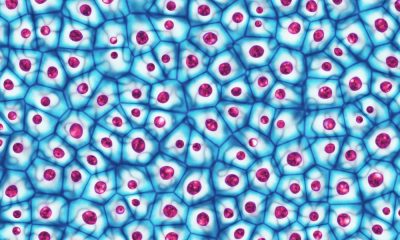

 Humans2 years ago
Humans2 years agoCell Rover analyzes the inside of cells without destroying them
-

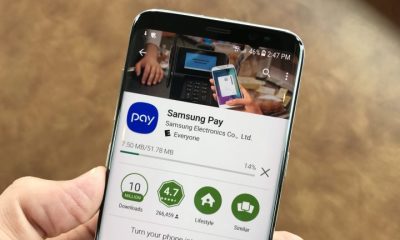

 Technology1 year ago
Technology1 year agoHow to prevent automatic download of applications on Samsung phones
